You are using an out of date browser. It may not display this or other websites correctly.
You should upgrade or use an alternative browser.
You should upgrade or use an alternative browser.
Ichos
Reviewer at hxosplus
Pros: + Reference sound with superb balance between technicalities and musicality
+ Transparent and crystal clear
+ Natural timbre and minimum digital glare
+ Excellent soundstage
+ Powerful amplifier
+ Great battery duration
+ Fast and responsive UI
+ Quite compact and not too heavy
+ Three headphone outputs
+ Dedicated balanced and single ended line outputs
+ Elegant and stylish
+ High quality protective case
+ Transparent and crystal clear
+ Natural timbre and minimum digital glare
+ Excellent soundstage
+ Powerful amplifier
+ Great battery duration
+ Fast and responsive UI
+ Quite compact and not too heavy
+ Three headphone outputs
+ Dedicated balanced and single ended line outputs
+ Elegant and stylish
+ High quality protective case
Cons: - Not as powerful as the competition
- Not as compact and lightweight as some other models
- Information bar will not display gain and filter settings
- Not as compact and lightweight as some other models
- Information bar will not display gain and filter settings
The review sample was kindly provided free of charge in exchange for my honest and subjective evaluation, I only paid import fees and tax.
I haven't received any monetary or any other kind of compensation and I don't use affiliate links.
The retail price is $700 and you can buy it from here.
M11 Plus ESS
The M11 Plus ESS is the newest version of the much acclaimed M11 Plus LTD (https://www.head-fi.org/showcase/fiio-m11-plus-ltd.25171/review/26267/) which had dual AK4497 DAC chips and is now discontinued.
The chip shortage forced FiiO to replace it with ES9068AS DAC chip from ESS and thus the M11 Plus ESS was born without any further increase in the retail price.

Technical highlights
The M11 Plus ESS features two ES9068AS DAC chips in a fully balanced configuration while low-pass filters have been replaced from OPA1662*2 to OPA927*2, carefully matching the new chipset.
Power output has been slightly increased to 660mWPC at 32Ω instead of 588mWPC for the AKM version.
Furthermore, the battery life of the new M11 Plus ESS is now improved from 11.5H on the AKM variant to 14H.
Audio data is passed through FiiO developed 4th generation FPGA which works together with two custom NDK femtosecond crystal oscillators.
The music player can handle virtually all existing file formats up to 32bit-768kHz in PCM, native DSD up to DSD512 and MQA decoding even in third party apps.
In USB-DAC mode is also an MQA 8x rendered.
The player supports FiiO's "All to DSD" algorithm.
The M11 Plus ESS uses two of the same feed forward error correction THX AAA-78 modules in a fully balanced configuration.
Special care has been given to the power supply which features independent low dropout regulators for all critical parts of the circuit while many measures have been taken to ensure excellent temperature management.
The circuit has a modular design ensuring that all digital and analog sections are totally separated and shielded from each other.

The unit is powered by a Qualcomm snapdragon 660 processor aided by 4GB of fast DDR5 ram and 64GB ROM, so it can handle multiple tasks and applications very smoothly like a flagship smartphone without lagging.
The operating system is customized Android 10 with official Play support while you can always switch to Pure Music mode.
The user experience is further enhanced thanks to the large 5.5", high resolution (720*1440) screen which has vibrant colors with excellent viewing angles and visibility while it is fast and responsive.
Bluetooth connection
The M11 Plus ESS features a two way Bluetooth module.
Besides support for DLNA and AirPlay, newly added is the support for AAC codec for Bluetooth reception and transmission for iPhone owners.
Bluetooth transmission supports SBC/AAC/aptX/aptX HD/LDAC while reception is limited to SBC/AAC/LDAC.
Bluetooth pairing is done easily while connection is stable with a good working distance.
Sound quality is very good given the nature of the Bluetooth protocol and you can use the M11 Plus ESS as a source for your Bluetooth headphones.
Full technical specifications are available here.
Design and build quality
The ESS version measures exactly the same as the LTD at 136.6x75.7x17.6mm, weighing about 310g.
Size and weight are ideal for everyday carry and one handed use.
The chassis of the player is made from CNC machined aluminium featuring FiiO's new hexagonal honeycomb design elements.
The back panel has a “diamond-cut” glass design that bounces light off in a mesmerizing way.
The M11 Plus ESS is very elegant and beautiful looking so I much prefer using it without the protection case.
Build quality is excellent and the unit comes with a screen protector pre-installed from the factory.
The only difference from the limited version is that the touch - sensitive side panel, which is used for controlling the volume, is now made from carbon fiber instead of smooth plastic.
The new material matches better with the overall appearance of the unit while it offers more controlled slide adjustment of the volume.

I/O
At the bottom part of the unit there are located the three headphone outputs (4.4mm and 2.5mm balanced plus 3.5mm single ended) and the USB 3.0 type-C port.
The 4.4mm output can also be configured as a real balanced line out, bypassing the amplification stage, with fixed or variable level.
The same applies to the 3.5mm single ended output which can also be set as a coaxial digital output.
The high speed USB 3.0 port is used for fast file transfers, charging, connecting to any computer in a USB DAC mode or for using the M11 Plus ESS as a digital transport.
You can also hook an external USB OTG thumb drive.

User interface
Aside from the touch screen, controlling the unit is done with the aid of several physical buttons and the sliding touch panel which is located at the left side of the chassis.
The sliding touch panel working principle can be customized through the OS.
Highly customizable is also the unique and very useful shortcut button that is located underneath the touch panel.
It can be set to perform a specific, single press action, like one click to switch between the low pass filters.
The ON/OFF button has embedded a multicolor LED that can be set as what to display.
At the right side of the chassis you will find the three classic buttons for controlling play/pause, previous and next track, the hold switch and the micro SD card slot.

User experience
As noted above using the M11 Plus ESS is a straightforward, smooth and hassle free experience.
The player is fast and responsive, WiFi reception is excellent and you can download all your favorite applications, multitask or switch to Pure Music mode which further maximizes sound performance by killing all unnecessary tasks.
The unit can be used one handed, it is compact enough to fit in a larger pocket, it doesn't get too hot and it has great battery duration which I roughly measured at about 11-12 hours of streaming music from the balanced output.
There are three gain settings while you can choose between five different working modes (Android, Pure Music, Bluetooth reception, USB DAC and AirPlay) from the drop down menu.
WiFi music transport is also available and the player supports all Android 10 features like gesture controls, dark theme etc.

Software omissions
There are only a couple of minor issues, the same as with the M11 Plus LTD or the M17 that FiiO are taking too long to fix.
First of all, you cannot select the low pass filter from the drop down menu and you have to open the full settings menu in order to do so.
Then, the top information bar will not display the gain and filter settings at a glance, so you have to rely on your memory to remember your selection.
And while this is not much of an issue for the digital filter, it sure is for the gain setting.
And a serious one, because you can accidentally blow a sensitive earphone or damage your hearing when you frequently switch from full sized headphones to sensitive IEMs that require different gain settings.
This is something that ought to be fixed immediately.

Accessories
The M11 Plus ESS comes with a glass screen protector pre-installed from the factory.
A premium leather case of the highest quality is included to help you protect the player from accidental drops.
The case has a lid with a secure clip so there is no risk for the player to accidentally slip outside it.
The unit doesn't get hot even with the case applied.
You also get a coaxial adapter and a USB 3.0 cable for charging and connecting to a PC.

Associated gear
As per usual practice, the M11 Plus ESS was burned for more than 150 hours before critical listening.
I have used most of my regular headphones and IEMs like the Focal Clear Mg, HiFiMan Arya V3, Sennheiser HD8XX, Meze Liric, FiiO FDX and Unique Melody MEXT among others.
The balanced output is superior both for the slightly better sound quality and the extra power but the single ended output is also good.
I have briefly tested the "All to DSD function" without performing any detailed listening comparisons as I am not fond of further digital processing.

Power output
The FiiO M11 Plus ESS is powerful enough to smoothly run all the normal headphones without even reaching its upper power limits.
Dynamic range is excellent and the M11 Plus ESS can become very impactful when the music commands for large dynamic swings.
As an example the Focal Clear Mg was already loud enough and thunderous at roughly 75 of 120 volume steps, at high gain from the balanced output.
It is not as powerful as some of the competition, like the iBasso DX240, but as long as you don't have any super difficult to drive headphones, then you are not going to run out of power.
At the same time the noise floor is literally inaudible making the M11 Plus ESS an excellent companion for your super sensitive IEMs.

Listening impressions
Exceptionally balanced is the key word for describing the M11 Plus ESS sound performance.
Balanced in the way that equilibrates the excellent technicalities with the deep musical expression without favoring one part at the expense of the other.
Absolutely linear frequency response with great extension, ultimate transparency and precision but without sounding analytical, artificial, rough, boring or bright.
The sound delivery is very mature, this is a player to boot from the beginning and start listening to your favorite music without the need to worry about careful headphone matching or genre selection at least as long as you respect the demand for high quality raw material due to the exposing and unforgiving nature.
Feed it with some well recorded music to discover that the player is headphone agnostic, it is as enjoyable with the Focal Clear Mg as well as with the HiFiMan Arya V3 and with all kinds of music.
The sound is cohesive and homogeneous, from the deep and imposing low end to the lush, smooth and finely articulated mid range, all the way up to the vividly energetic treble which is by no way harsh or fatiguing.
The player is balanced in all of its parameters, slightly warmish as not to sound cold, full bodied but not too visceral, crystal clear but not ice glassy, fast but not hasty, detailed and resolving but not analytical, layered and precise but not detached, live and sparkling but not too enthusiastic.
Digital glare is kept on the bare minimum while timbre is sufficiently natural with an almost lifelike, organic texture.
Acoustic instruments and human voices are reproduced quite close to reality while the M11 Plus ESS is equally at home with synthesized electronic music.
You don't need to listen to something complicated, just a solo instrument like the magnificent lute is enough to get a glimpse of the highly musical and harmoniously intense sound performance.

I kept listening to my favorite music for hours and honestly I wasn't able to spot anything bothering or distracting.
Of course I can see some users wanting a slightly more technical player like the M17 and some others searching for better liquidity or lushness like that offered by the DX300.
But the really great achievement with the M11 Plus ESS is that it is positioned just right in the middle, offering an amazingly well blended sound performance that is difficult not to please, no matter the headphone used or your music tastes.
Soundstaging is exceptional for a portable player, with the right headphone the M11 Plus ESS will reward you with a three dimensional and holographic soundscape, well sculptured images, exemplary positioning accuracy and deep communication of the hall ambience.
A great example was listening to the following recording of Monteverdi's opera "Il Ritorno d' Ulisse in Patria '' where with the aid of the HiFiMan Arya V3, I was literally transported into the wonderful Château de versailles, watching and listening to the performers.

Selected comparisons
vs iBasso DX240/Stock AMP ($949)
The iBasso DX240 is undeniably the most portable and pocket friendly high end player in the market.
Measuring just 124x71.5x19.4mm and weighing a mere 240g is slightly more compact and lightweight than the M11 Plus ESS making for the perfect commuting companion but miniaturizing costs $250 more.
Additionally it has a smaller 5" screen and misses a 4.4mm balanced headphone and line output.
The key structural difference between the two players is that the DX240 supports the interchangeable AMP-card modular system that gives you the opportunity to further customize the sound to your liking.
I am not going into detailed technical and software comparison, both players are fast, responsive and user friendly but the DX240 has the edge when it comes to one handed use.
Sound-wise are quite close, they share more or less the same sound signature with some minor differences.
The DX240 is slightly more technical, bass is more tight and controlled with better separation and a touch more dynamic but it loses some of its weight when compared to the M11 Plus ESS.
On the other hand, M11 Plus ESS is more suave in the mids and the treble with a slower note decay where the DX240 is drier and thinner.
The DX240 is bolder in its presentation, a little more aggressive and faster with better separation and space between the lines but not that much as to sound detached.
Soundstage is wider on the DX240 with increased positioning accuracy but not as holographic and layered as in the M11 Plus ESS.
Swapping to the AMP8 MK2 and the DX240 becomes more analogue sounding, it gains in body weight, soundstage dimensionality and timbre texture while it retains the excellent technicalities.
But the M11 Plus ESS strikes the golden ratio between these two amplifier modules and while it is not further customizable it doesn't really matter because it sounds very balanced without the further need to adjust something.
Both players are a gem and as always you are called to carefully judge your personal needs and then decide which player suits you the best.

vs FiiO M11 Plus LTD
Identical physical appearance and user experience with some variations regarding the overall sound presentation.
Differences are subtle but they do exist giving each player some unique characteristics.
Both have a linear frequency response while they are transparent with the same great technical performance.
The M11 Plus LTD is a touch more relaxed in contrast to the bolder and more enthusiastic ESS version.
The mid range on the LTD is just slightly more lush and warmer with a fuller texture but not as firm and finely sculptured as in the ESS.
The same goes for the treble which is a touch slower in the decay, not as sharp and accurate but it sounds just a bit more relaxed and natural.
Bass is on the same, masterclass, level for both players while the ESS version has the minor edge on overall clarity and detail retrieval.
The biggest difference is in the soundstage where in the ESS is definitely more expanded in the width, it offers better positioning accuracy, deeper layering and above all a greater communication of the recording ambience.
And now the answer to the million dollar question: I own the M11 Plus LTD, should I buy the ESS version?
Well, honestly I wouldn't, the LTD is an excellent sounding player but I don't consider it neither as an upgrade nor as a downgrade.
Both are among the best digital audio players in the market, more alike than different, just another flavor of the same great recipe.
And for all fans of FiiO house sound who haven't made it to buy the LTD version, don't worry, just go grab the ESS and be wholly satisfied.

In the end
A suitable acronym for the ESS version of FiiO's M11 Plus would read something like "Effectively Superior Sound".
Balanced to the bone, the M11 Plus ESS is a player that offers instant listening satisfaction just from the beginning without the need to worry about headphone matching or music selection.
With excellent sound performance and technicalities, superb build quality, compact size, good battery duration and hussle free user experience, the M11 Plus ESS is one of the best players in the market that you can go and buy without having a second thought.
Test playlist
Copyright - Petros Laskis 2022.
I haven't received any monetary or any other kind of compensation and I don't use affiliate links.
The retail price is $700 and you can buy it from here.
M11 Plus ESS
The M11 Plus ESS is the newest version of the much acclaimed M11 Plus LTD (https://www.head-fi.org/showcase/fiio-m11-plus-ltd.25171/review/26267/) which had dual AK4497 DAC chips and is now discontinued.
The chip shortage forced FiiO to replace it with ES9068AS DAC chip from ESS and thus the M11 Plus ESS was born without any further increase in the retail price.

Technical highlights
The M11 Plus ESS features two ES9068AS DAC chips in a fully balanced configuration while low-pass filters have been replaced from OPA1662*2 to OPA927*2, carefully matching the new chipset.
Power output has been slightly increased to 660mWPC at 32Ω instead of 588mWPC for the AKM version.
Furthermore, the battery life of the new M11 Plus ESS is now improved from 11.5H on the AKM variant to 14H.
Audio data is passed through FiiO developed 4th generation FPGA which works together with two custom NDK femtosecond crystal oscillators.
The music player can handle virtually all existing file formats up to 32bit-768kHz in PCM, native DSD up to DSD512 and MQA decoding even in third party apps.
In USB-DAC mode is also an MQA 8x rendered.
The player supports FiiO's "All to DSD" algorithm.
The M11 Plus ESS uses two of the same feed forward error correction THX AAA-78 modules in a fully balanced configuration.
Special care has been given to the power supply which features independent low dropout regulators for all critical parts of the circuit while many measures have been taken to ensure excellent temperature management.
The circuit has a modular design ensuring that all digital and analog sections are totally separated and shielded from each other.

The unit is powered by a Qualcomm snapdragon 660 processor aided by 4GB of fast DDR5 ram and 64GB ROM, so it can handle multiple tasks and applications very smoothly like a flagship smartphone without lagging.
The operating system is customized Android 10 with official Play support while you can always switch to Pure Music mode.
The user experience is further enhanced thanks to the large 5.5", high resolution (720*1440) screen which has vibrant colors with excellent viewing angles and visibility while it is fast and responsive.
Bluetooth connection
The M11 Plus ESS features a two way Bluetooth module.
Besides support for DLNA and AirPlay, newly added is the support for AAC codec for Bluetooth reception and transmission for iPhone owners.
Bluetooth transmission supports SBC/AAC/aptX/aptX HD/LDAC while reception is limited to SBC/AAC/LDAC.
Bluetooth pairing is done easily while connection is stable with a good working distance.
Sound quality is very good given the nature of the Bluetooth protocol and you can use the M11 Plus ESS as a source for your Bluetooth headphones.
Full technical specifications are available here.
Design and build quality
The ESS version measures exactly the same as the LTD at 136.6x75.7x17.6mm, weighing about 310g.
Size and weight are ideal for everyday carry and one handed use.
The chassis of the player is made from CNC machined aluminium featuring FiiO's new hexagonal honeycomb design elements.
The back panel has a “diamond-cut” glass design that bounces light off in a mesmerizing way.
The M11 Plus ESS is very elegant and beautiful looking so I much prefer using it without the protection case.
Build quality is excellent and the unit comes with a screen protector pre-installed from the factory.
The only difference from the limited version is that the touch - sensitive side panel, which is used for controlling the volume, is now made from carbon fiber instead of smooth plastic.
The new material matches better with the overall appearance of the unit while it offers more controlled slide adjustment of the volume.

I/O
At the bottom part of the unit there are located the three headphone outputs (4.4mm and 2.5mm balanced plus 3.5mm single ended) and the USB 3.0 type-C port.
The 4.4mm output can also be configured as a real balanced line out, bypassing the amplification stage, with fixed or variable level.
The same applies to the 3.5mm single ended output which can also be set as a coaxial digital output.
The high speed USB 3.0 port is used for fast file transfers, charging, connecting to any computer in a USB DAC mode or for using the M11 Plus ESS as a digital transport.
You can also hook an external USB OTG thumb drive.

User interface
Aside from the touch screen, controlling the unit is done with the aid of several physical buttons and the sliding touch panel which is located at the left side of the chassis.
The sliding touch panel working principle can be customized through the OS.
Highly customizable is also the unique and very useful shortcut button that is located underneath the touch panel.
It can be set to perform a specific, single press action, like one click to switch between the low pass filters.
The ON/OFF button has embedded a multicolor LED that can be set as what to display.
At the right side of the chassis you will find the three classic buttons for controlling play/pause, previous and next track, the hold switch and the micro SD card slot.

User experience
As noted above using the M11 Plus ESS is a straightforward, smooth and hassle free experience.
The player is fast and responsive, WiFi reception is excellent and you can download all your favorite applications, multitask or switch to Pure Music mode which further maximizes sound performance by killing all unnecessary tasks.
The unit can be used one handed, it is compact enough to fit in a larger pocket, it doesn't get too hot and it has great battery duration which I roughly measured at about 11-12 hours of streaming music from the balanced output.
There are three gain settings while you can choose between five different working modes (Android, Pure Music, Bluetooth reception, USB DAC and AirPlay) from the drop down menu.
WiFi music transport is also available and the player supports all Android 10 features like gesture controls, dark theme etc.

Software omissions
There are only a couple of minor issues, the same as with the M11 Plus LTD or the M17 that FiiO are taking too long to fix.
First of all, you cannot select the low pass filter from the drop down menu and you have to open the full settings menu in order to do so.
Then, the top information bar will not display the gain and filter settings at a glance, so you have to rely on your memory to remember your selection.
And while this is not much of an issue for the digital filter, it sure is for the gain setting.
And a serious one, because you can accidentally blow a sensitive earphone or damage your hearing when you frequently switch from full sized headphones to sensitive IEMs that require different gain settings.
This is something that ought to be fixed immediately.

Accessories
The M11 Plus ESS comes with a glass screen protector pre-installed from the factory.
A premium leather case of the highest quality is included to help you protect the player from accidental drops.
The case has a lid with a secure clip so there is no risk for the player to accidentally slip outside it.
The unit doesn't get hot even with the case applied.
You also get a coaxial adapter and a USB 3.0 cable for charging and connecting to a PC.

Associated gear
As per usual practice, the M11 Plus ESS was burned for more than 150 hours before critical listening.
I have used most of my regular headphones and IEMs like the Focal Clear Mg, HiFiMan Arya V3, Sennheiser HD8XX, Meze Liric, FiiO FDX and Unique Melody MEXT among others.
The balanced output is superior both for the slightly better sound quality and the extra power but the single ended output is also good.
I have briefly tested the "All to DSD function" without performing any detailed listening comparisons as I am not fond of further digital processing.

Power output
The FiiO M11 Plus ESS is powerful enough to smoothly run all the normal headphones without even reaching its upper power limits.
Dynamic range is excellent and the M11 Plus ESS can become very impactful when the music commands for large dynamic swings.
As an example the Focal Clear Mg was already loud enough and thunderous at roughly 75 of 120 volume steps, at high gain from the balanced output.
It is not as powerful as some of the competition, like the iBasso DX240, but as long as you don't have any super difficult to drive headphones, then you are not going to run out of power.
At the same time the noise floor is literally inaudible making the M11 Plus ESS an excellent companion for your super sensitive IEMs.

Listening impressions
Exceptionally balanced is the key word for describing the M11 Plus ESS sound performance.
Balanced in the way that equilibrates the excellent technicalities with the deep musical expression without favoring one part at the expense of the other.
Absolutely linear frequency response with great extension, ultimate transparency and precision but without sounding analytical, artificial, rough, boring or bright.
The sound delivery is very mature, this is a player to boot from the beginning and start listening to your favorite music without the need to worry about careful headphone matching or genre selection at least as long as you respect the demand for high quality raw material due to the exposing and unforgiving nature.
Feed it with some well recorded music to discover that the player is headphone agnostic, it is as enjoyable with the Focal Clear Mg as well as with the HiFiMan Arya V3 and with all kinds of music.
The sound is cohesive and homogeneous, from the deep and imposing low end to the lush, smooth and finely articulated mid range, all the way up to the vividly energetic treble which is by no way harsh or fatiguing.
The player is balanced in all of its parameters, slightly warmish as not to sound cold, full bodied but not too visceral, crystal clear but not ice glassy, fast but not hasty, detailed and resolving but not analytical, layered and precise but not detached, live and sparkling but not too enthusiastic.
Digital glare is kept on the bare minimum while timbre is sufficiently natural with an almost lifelike, organic texture.
Acoustic instruments and human voices are reproduced quite close to reality while the M11 Plus ESS is equally at home with synthesized electronic music.
You don't need to listen to something complicated, just a solo instrument like the magnificent lute is enough to get a glimpse of the highly musical and harmoniously intense sound performance.

I kept listening to my favorite music for hours and honestly I wasn't able to spot anything bothering or distracting.
Of course I can see some users wanting a slightly more technical player like the M17 and some others searching for better liquidity or lushness like that offered by the DX300.
But the really great achievement with the M11 Plus ESS is that it is positioned just right in the middle, offering an amazingly well blended sound performance that is difficult not to please, no matter the headphone used or your music tastes.
Soundstaging is exceptional for a portable player, with the right headphone the M11 Plus ESS will reward you with a three dimensional and holographic soundscape, well sculptured images, exemplary positioning accuracy and deep communication of the hall ambience.
A great example was listening to the following recording of Monteverdi's opera "Il Ritorno d' Ulisse in Patria '' where with the aid of the HiFiMan Arya V3, I was literally transported into the wonderful Château de versailles, watching and listening to the performers.

Selected comparisons
vs iBasso DX240/Stock AMP ($949)
The iBasso DX240 is undeniably the most portable and pocket friendly high end player in the market.
Measuring just 124x71.5x19.4mm and weighing a mere 240g is slightly more compact and lightweight than the M11 Plus ESS making for the perfect commuting companion but miniaturizing costs $250 more.
Additionally it has a smaller 5" screen and misses a 4.4mm balanced headphone and line output.
The key structural difference between the two players is that the DX240 supports the interchangeable AMP-card modular system that gives you the opportunity to further customize the sound to your liking.
I am not going into detailed technical and software comparison, both players are fast, responsive and user friendly but the DX240 has the edge when it comes to one handed use.
Sound-wise are quite close, they share more or less the same sound signature with some minor differences.
The DX240 is slightly more technical, bass is more tight and controlled with better separation and a touch more dynamic but it loses some of its weight when compared to the M11 Plus ESS.
On the other hand, M11 Plus ESS is more suave in the mids and the treble with a slower note decay where the DX240 is drier and thinner.
The DX240 is bolder in its presentation, a little more aggressive and faster with better separation and space between the lines but not that much as to sound detached.
Soundstage is wider on the DX240 with increased positioning accuracy but not as holographic and layered as in the M11 Plus ESS.
Swapping to the AMP8 MK2 and the DX240 becomes more analogue sounding, it gains in body weight, soundstage dimensionality and timbre texture while it retains the excellent technicalities.
But the M11 Plus ESS strikes the golden ratio between these two amplifier modules and while it is not further customizable it doesn't really matter because it sounds very balanced without the further need to adjust something.
Both players are a gem and as always you are called to carefully judge your personal needs and then decide which player suits you the best.

vs FiiO M11 Plus LTD
Identical physical appearance and user experience with some variations regarding the overall sound presentation.
Differences are subtle but they do exist giving each player some unique characteristics.
Both have a linear frequency response while they are transparent with the same great technical performance.
The M11 Plus LTD is a touch more relaxed in contrast to the bolder and more enthusiastic ESS version.
The mid range on the LTD is just slightly more lush and warmer with a fuller texture but not as firm and finely sculptured as in the ESS.
The same goes for the treble which is a touch slower in the decay, not as sharp and accurate but it sounds just a bit more relaxed and natural.
Bass is on the same, masterclass, level for both players while the ESS version has the minor edge on overall clarity and detail retrieval.
The biggest difference is in the soundstage where in the ESS is definitely more expanded in the width, it offers better positioning accuracy, deeper layering and above all a greater communication of the recording ambience.
And now the answer to the million dollar question: I own the M11 Plus LTD, should I buy the ESS version?
Well, honestly I wouldn't, the LTD is an excellent sounding player but I don't consider it neither as an upgrade nor as a downgrade.
Both are among the best digital audio players in the market, more alike than different, just another flavor of the same great recipe.
And for all fans of FiiO house sound who haven't made it to buy the LTD version, don't worry, just go grab the ESS and be wholly satisfied.

In the end
A suitable acronym for the ESS version of FiiO's M11 Plus would read something like "Effectively Superior Sound".
Balanced to the bone, the M11 Plus ESS is a player that offers instant listening satisfaction just from the beginning without the need to worry about headphone matching or music selection.
With excellent sound performance and technicalities, superb build quality, compact size, good battery duration and hussle free user experience, the M11 Plus ESS is one of the best players in the market that you can go and buy without having a second thought.
Test playlist
Copyright - Petros Laskis 2022.
Last edited:
Moonstar
100+ Head-Fier
Pros: Versatile Sound Character with decent level of Resolution & Dynamics,
Natural Bass Response,
Transparent & Detailed Midrange Tuning,
Powerful & Very Clean Output,
Almost any Type of Analog & Digital in- & outputs (4.4mm/2.5mm Balanced, Coaxial, BT),
Decent Hardware Specs (SD 660 CPU, THX-AAA-78 Module, ES9068AS*2 DAC, etc.),
Build Quality, Display, Design,
Intelligent Volume System,
Good Battery Life,
Premium Leather Case,
Price to Performance Ratio
Natural Bass Response,
Transparent & Detailed Midrange Tuning,
Powerful & Very Clean Output,
Almost any Type of Analog & Digital in- & outputs (4.4mm/2.5mm Balanced, Coaxial, BT),
Decent Hardware Specs (SD 660 CPU, THX-AAA-78 Module, ES9068AS*2 DAC, etc.),
Build Quality, Display, Design,
Intelligent Volume System,
Good Battery Life,
Premium Leather Case,
Price to Performance Ratio
Cons: Larger in size compared to the M11/M11 Pro,
Heavier than the M11/M11 Pro,
Only One Micro SD card slot
Heavier than the M11/M11 Pro,
Only One Micro SD card slot
FiiO M11 Plus Portable Digital Audio Player Review
Introduction:
I am sure that many audiophiles do remember that FiiO released last year the M11 Plus LTD with the AK4497*2 Dual DAC chipset, but since the fire outbreak in AKM’s factory the quantity of any AKM DAC chip is very limited on the market. However, FiiO promised that they do plan to release a M11 Plus with ESS Saber DAC chip in 2022.
The M11 Plus that I will now review for you comes with the latest ESS chipset, that utilizes two ES9068AS DAC’s (Digital to Analog Converter), which do offer an audible performance improvement over its AKM model with better SNR and THD+N values.
The M11 Plus offers also some other remarkable specs like the Snapdragon 660 Octa-Core SoC, THX AAA-78 Amp Module, 5.5” 18:9 bezel-less touch screen 2.5mm & 4.4mm Balanced outs, MQA 8x decoding, Two-way Bluetooth Transmission with LDAC support and many more.

Disclaimer:
I would like to thank FiiO for providing me the M11 Plus as review sample. I am not affiliated with FiiO beyond this review and these words reflect my true and unaltered, opinions about the product.
Price & Availability:
The actual price for the FiiO M11 Plus is 699.99 US$. More information’s can be found under the link below;
Package and Accessories:
The FiiO M11 Plus came inside a black box with FiiO branding on the top, which is wrapped with a fancy looking cardboard sleeve that displays the companies new package design. The cardboard sleeve has a black background and shows the illustration of the M11 Plus and some product related brandings on its surface that do have a nice iridescent effect.

This box is containing the following items/accessories;
- 1 x FiiO M11 Plus Digital Audio Player
- 1 x USB 3.0 Type-C to Type A Charging/Data Cable
- 1 x Coaxial Cable
- 1 x Micro SD Card Slot Removing Tool
- 1 x Leather Case
- 1 x Quick Start Guide
- 1 x Warranty Card
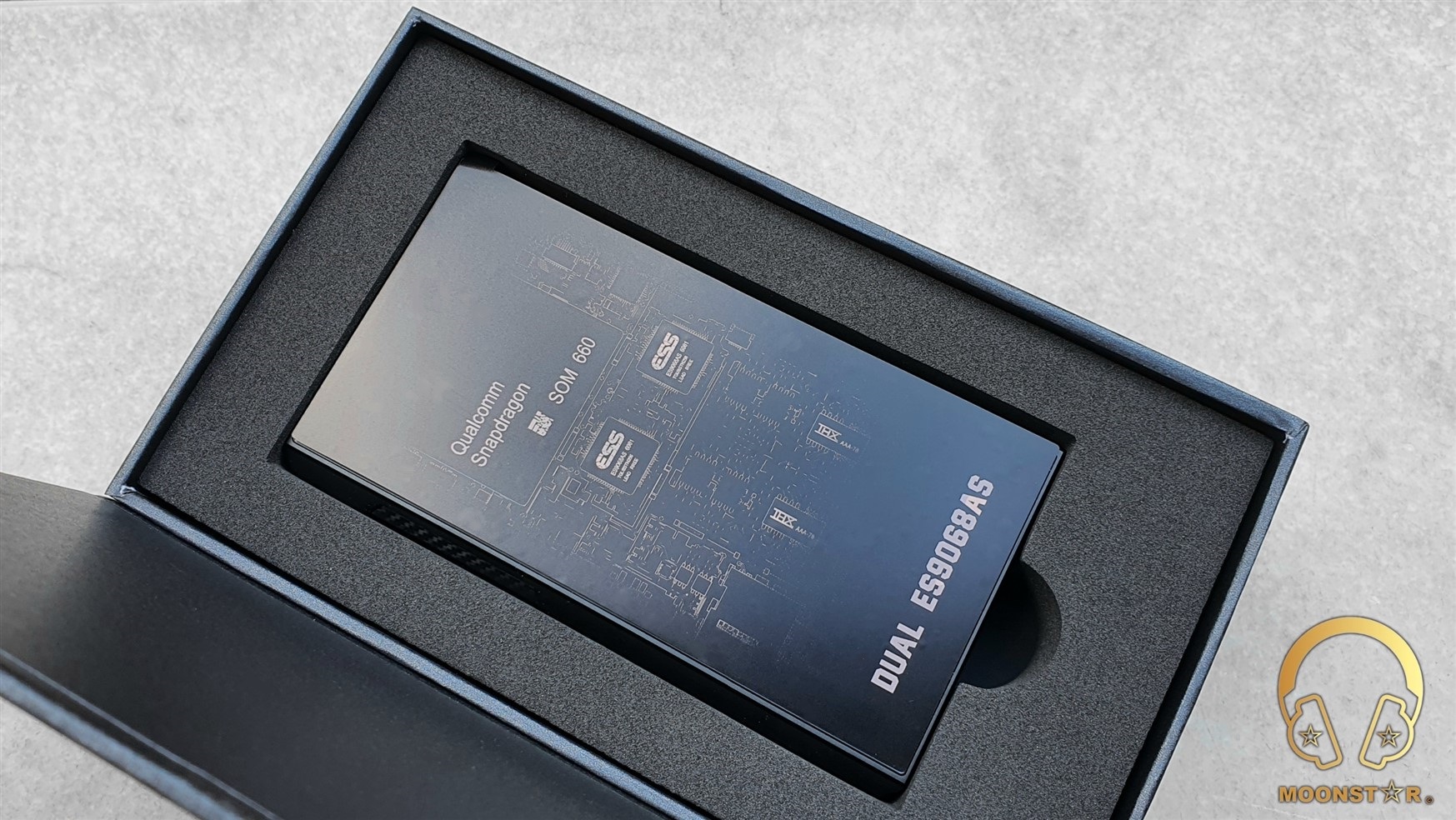
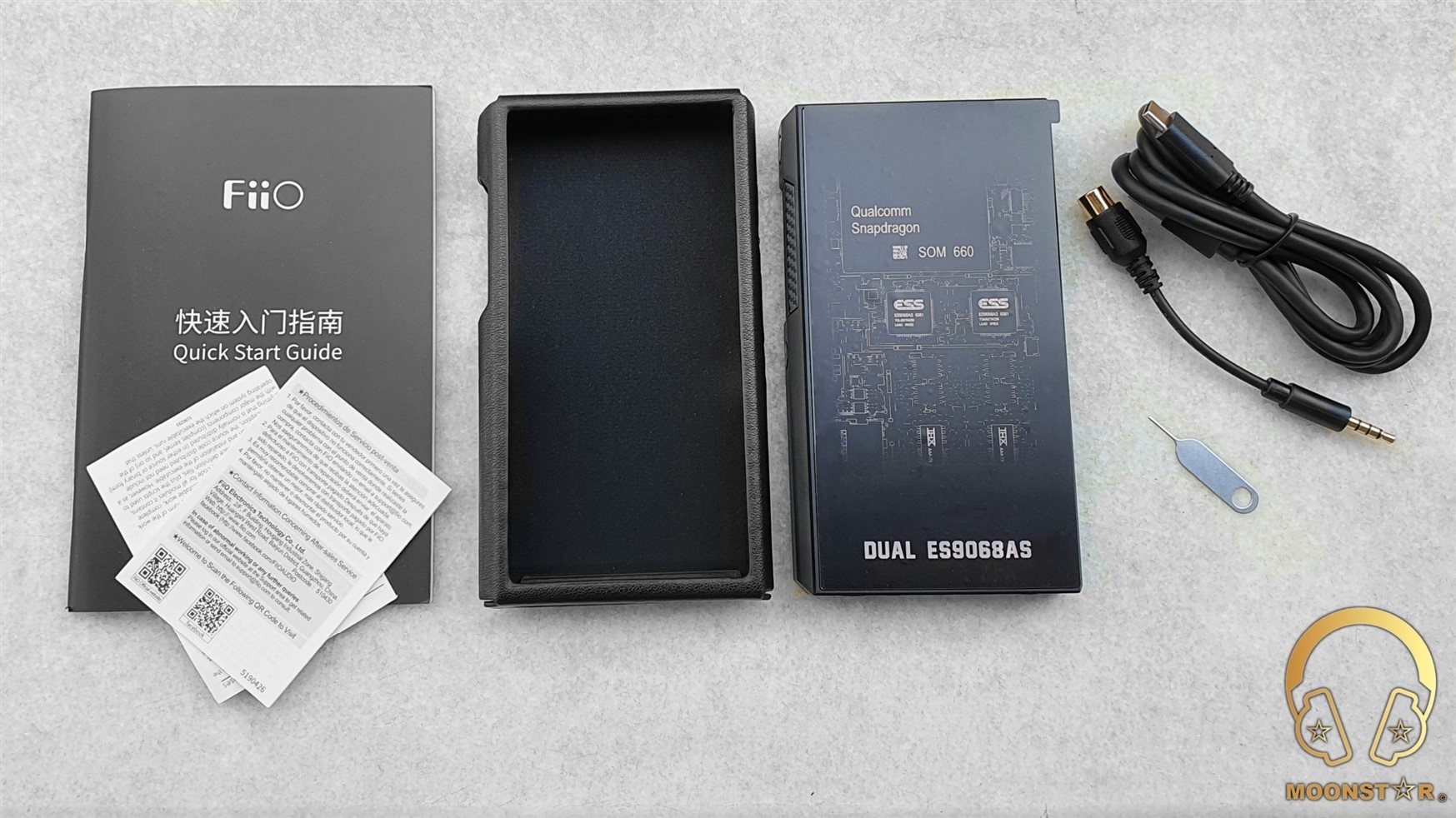
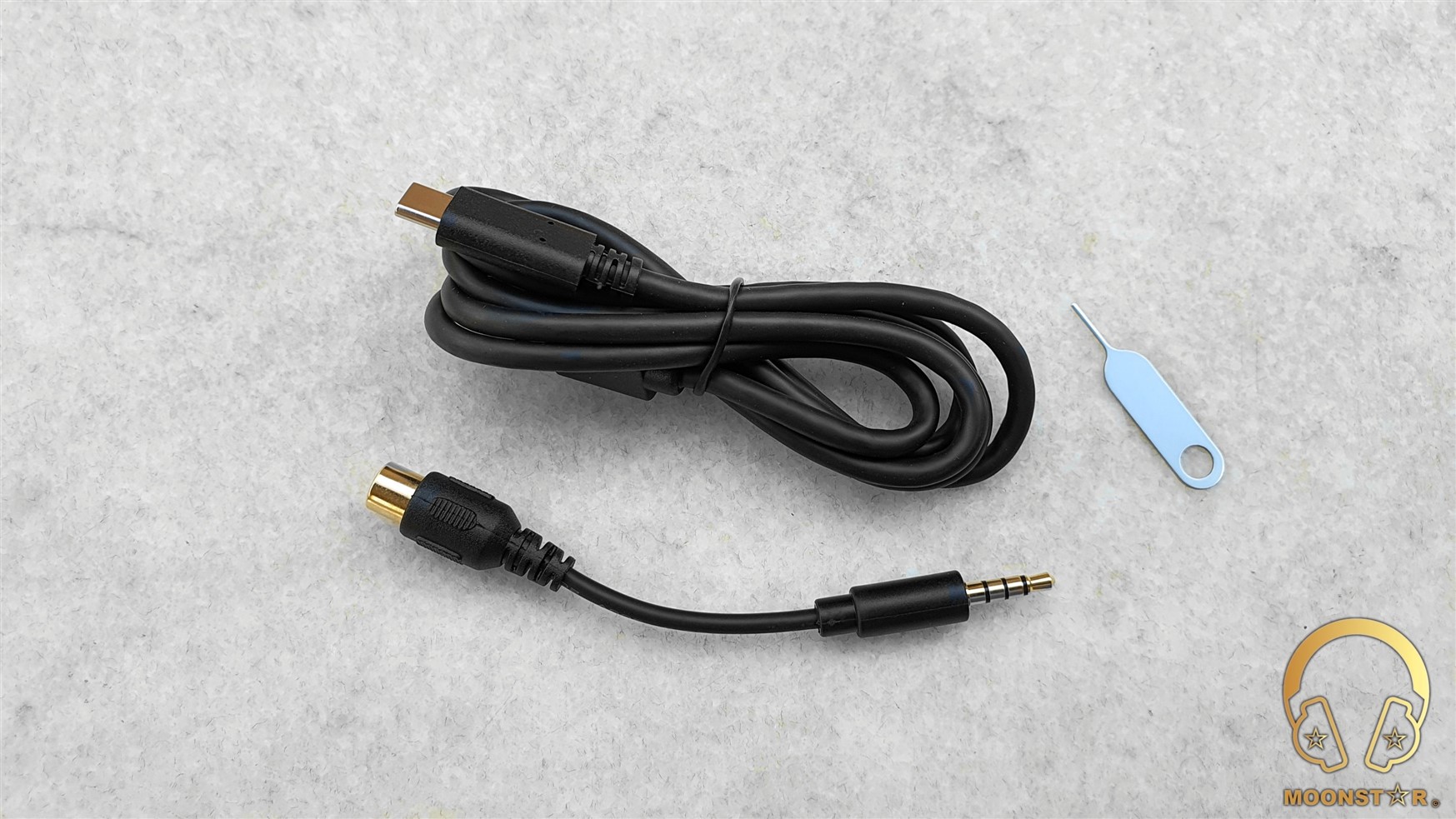
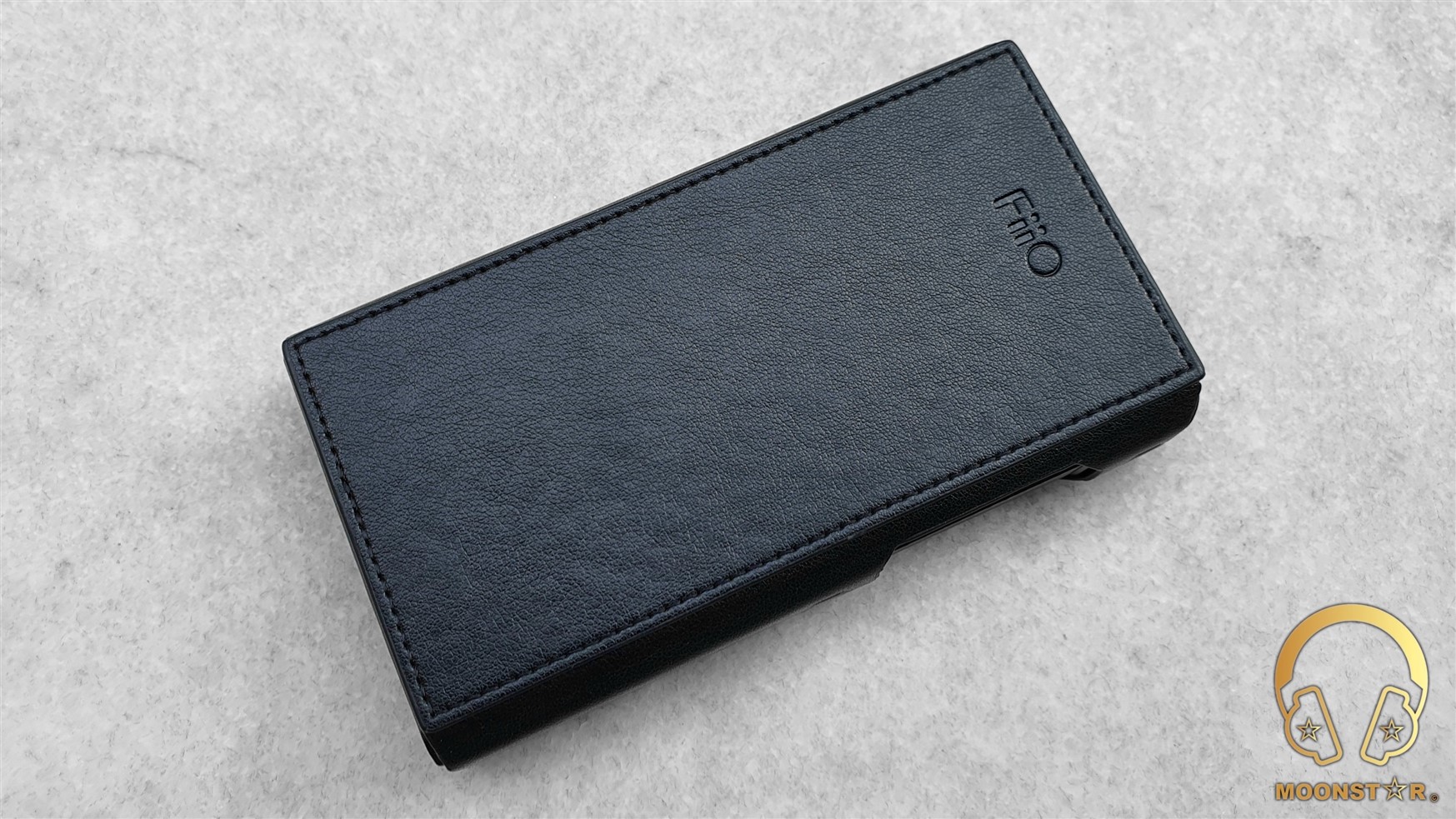
Design & Build Quality:
The M11 Plus adopts FiiO’s 6th Generation Honeycomb design, which stands out with Hexagonal design elements with aggressive edges that gives the device nice futuristic and premium looking appearance.
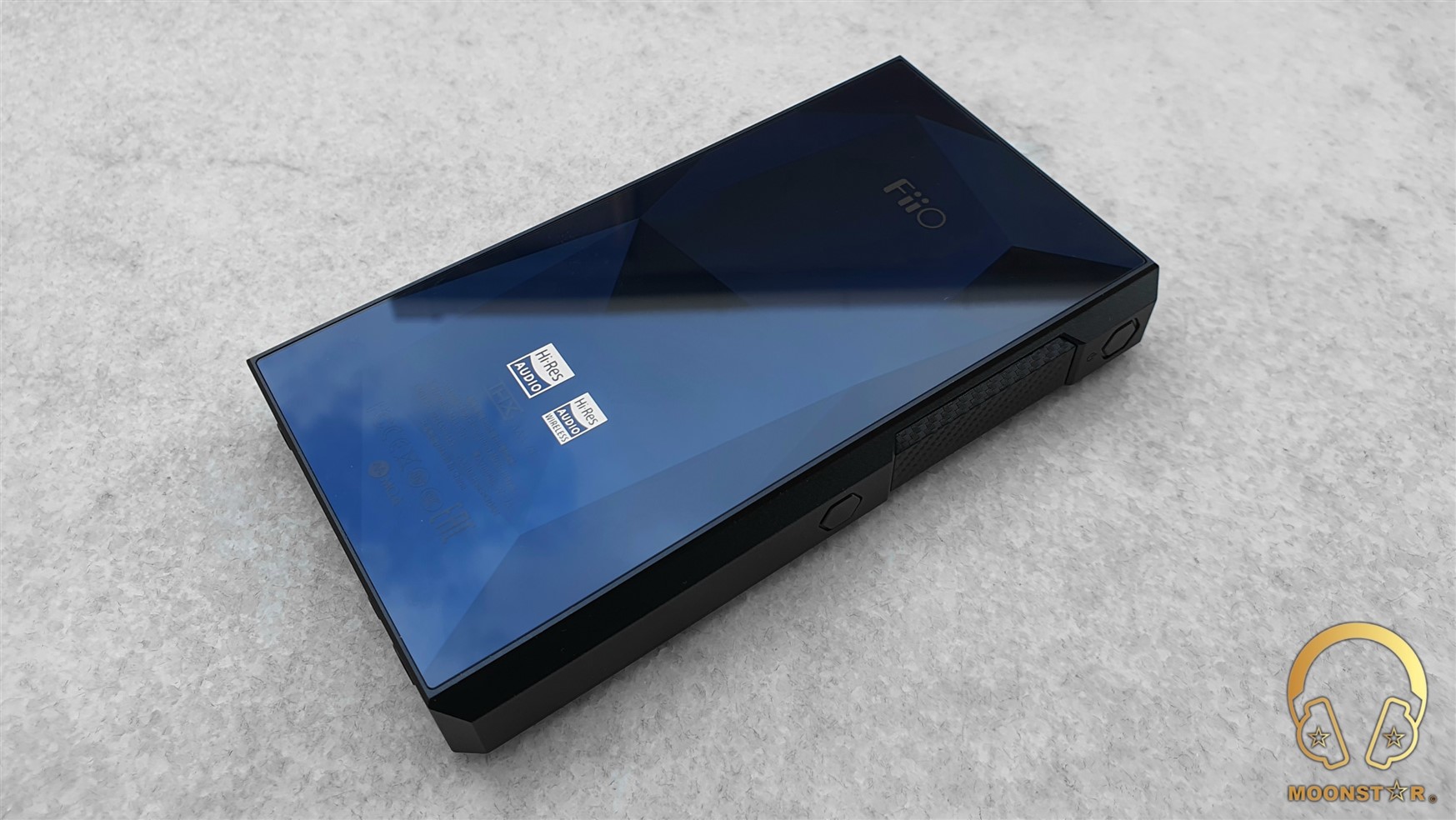
The M11 Plus has dimensions of 136.6×75.7×17.6mm and weights about 295grams, which gives you immediately an impression that you hold something solid and of high quality in your hands.
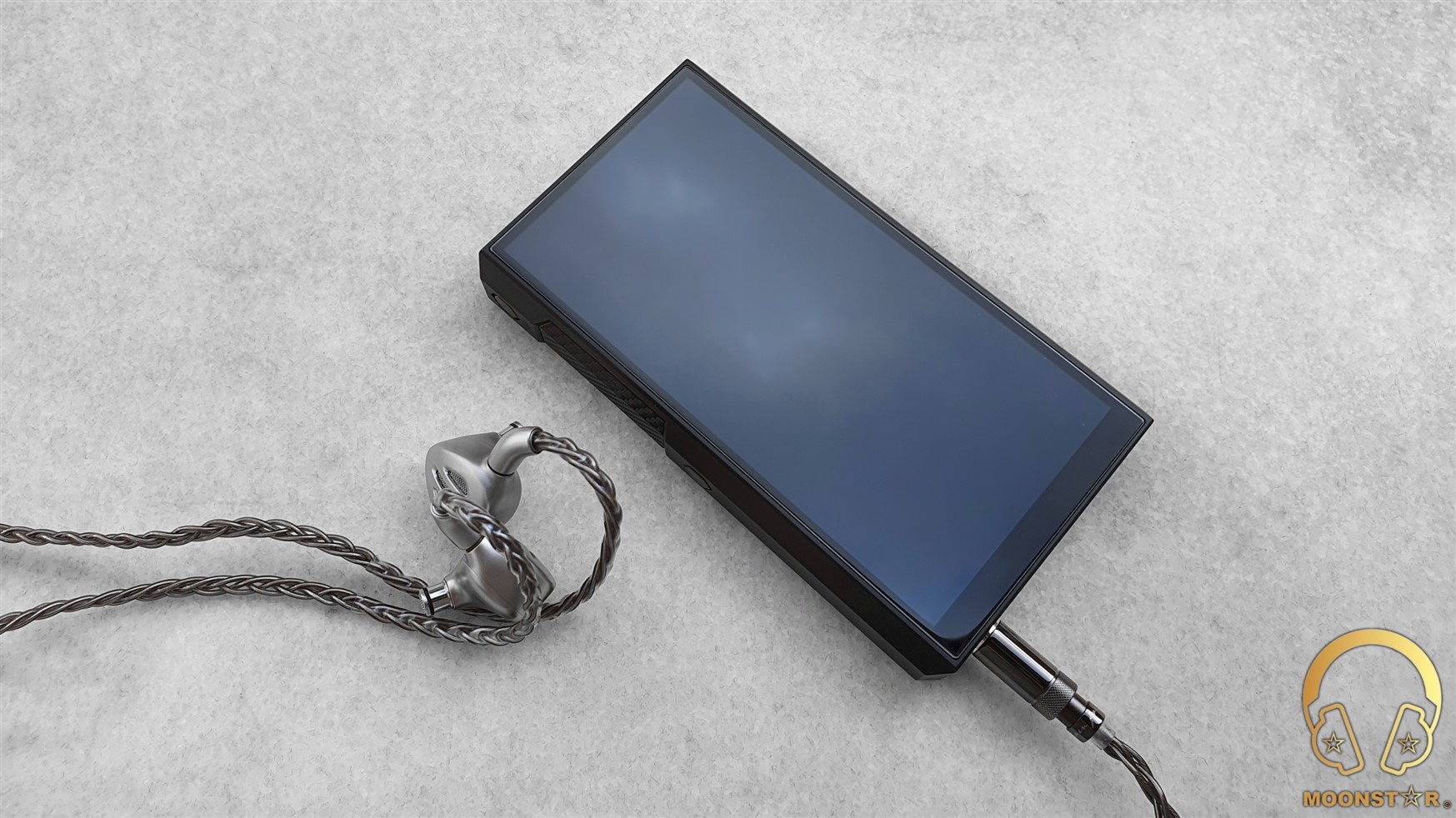
On the front of the device is a gorgeous looking 5.5’’ 18:9 touch screen with a resolution of 720*1440. The display shows a decent screen to body, which comes with a pre-installed glass screen protector that has soft edges with a 2.5D design.
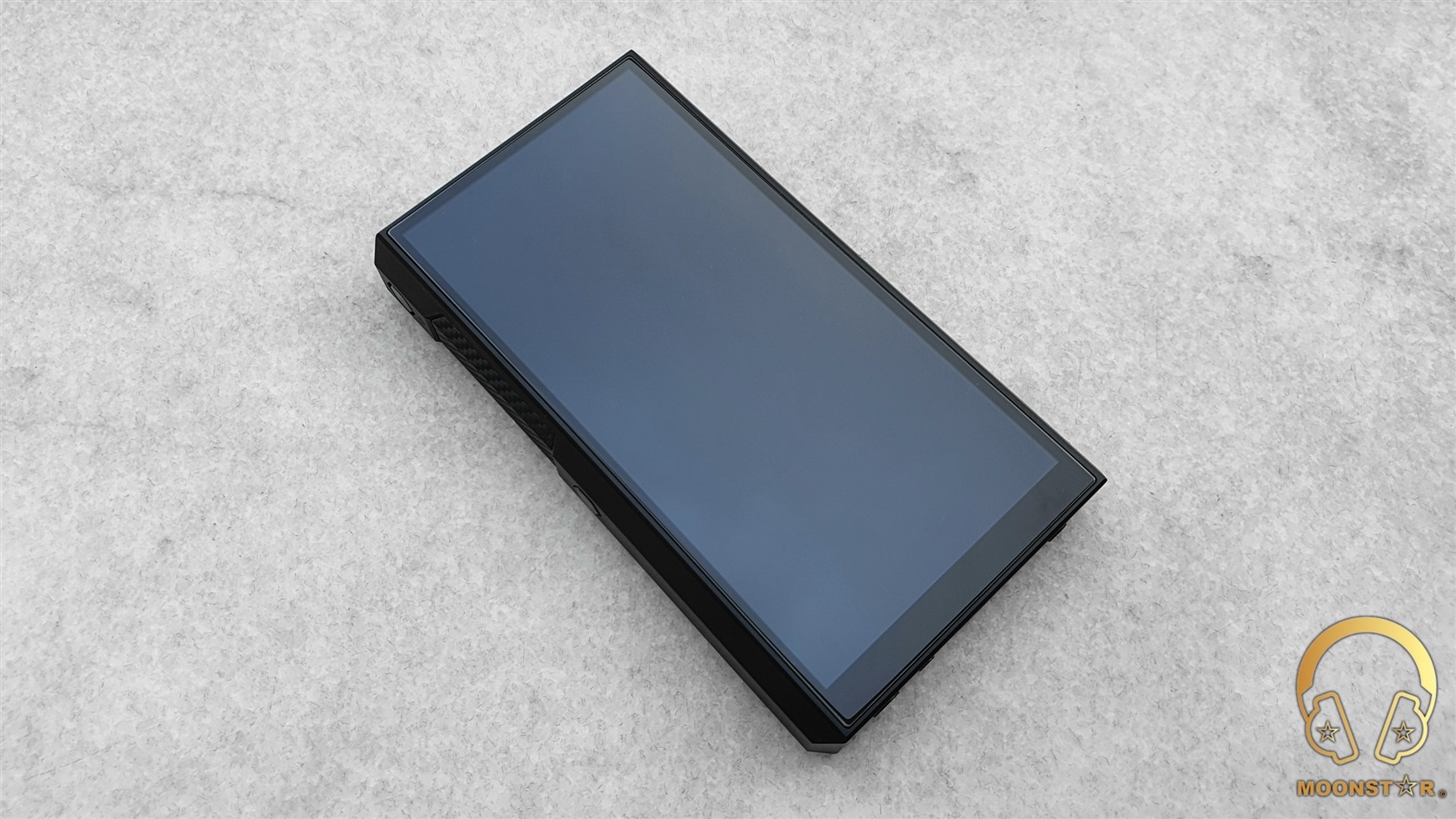
At bottom of the device is the area with many Analog & Digital interface, which features the 4.4mm (TRRRS) & 2.5mm (TRRS) Balanced outputs that do share lineout functions. Here is also a USB Type-C port that utilizes Digital Out, Data (File Transfers) and Charging functions.
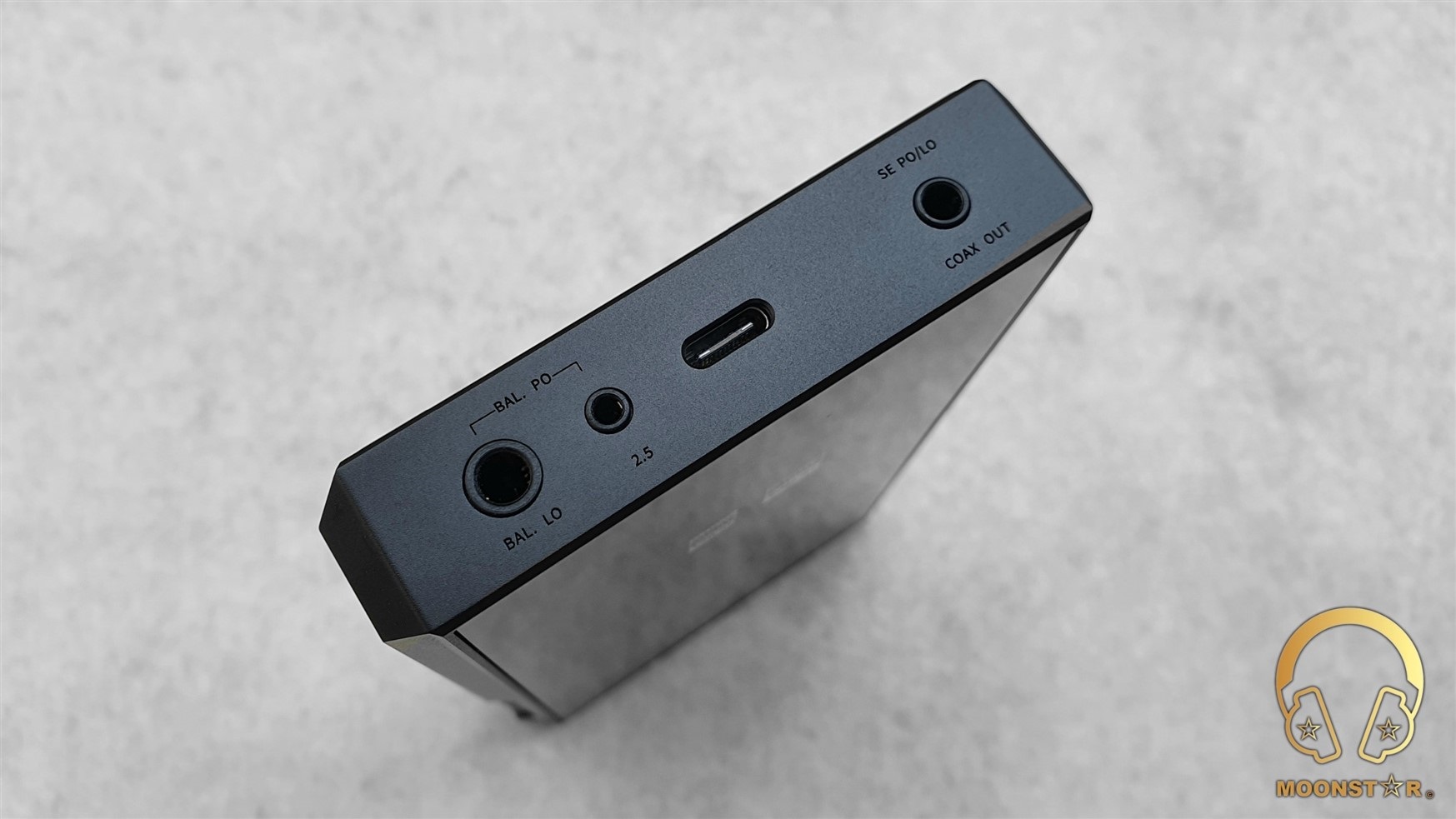
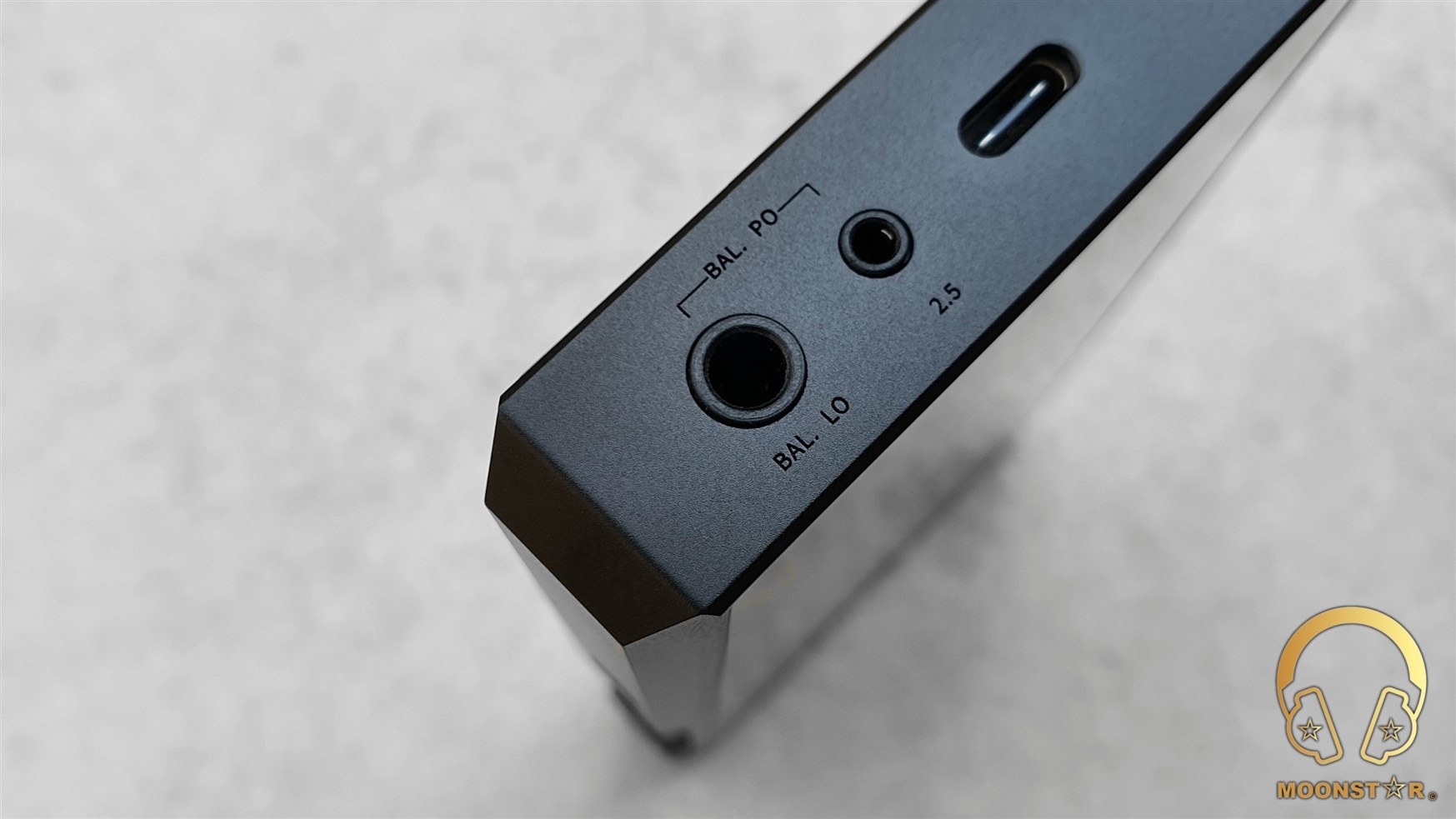
Another Analog output is the 3.5mm Single Ended headphone port that shares Phone Out, Line Out and SPDIF outputs.
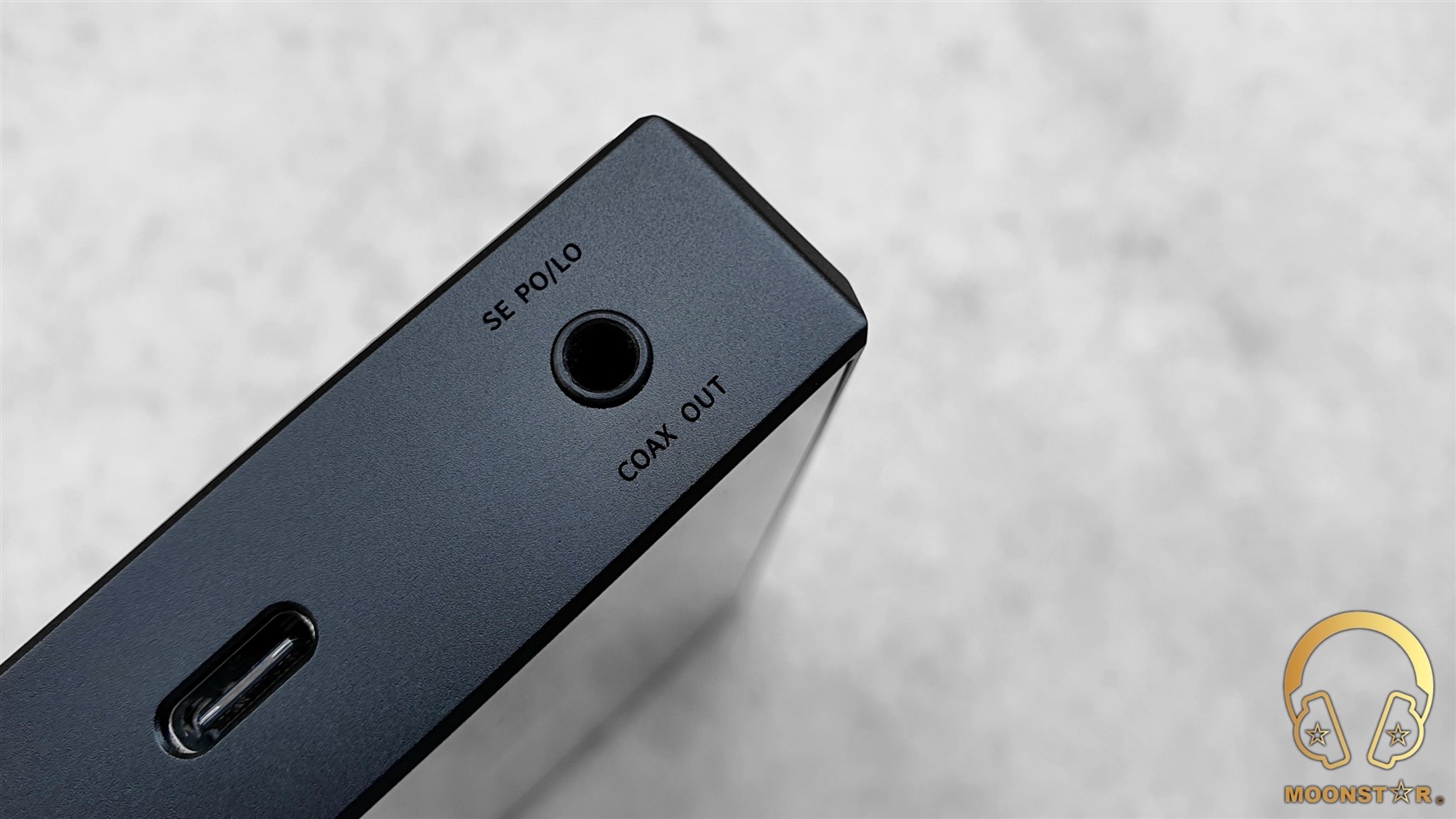
Both the Power/Lockscreen and the Multifunctional button do have hexagonal design, while the Power/Lockscreen button has a nice LED status indicator around the edges.
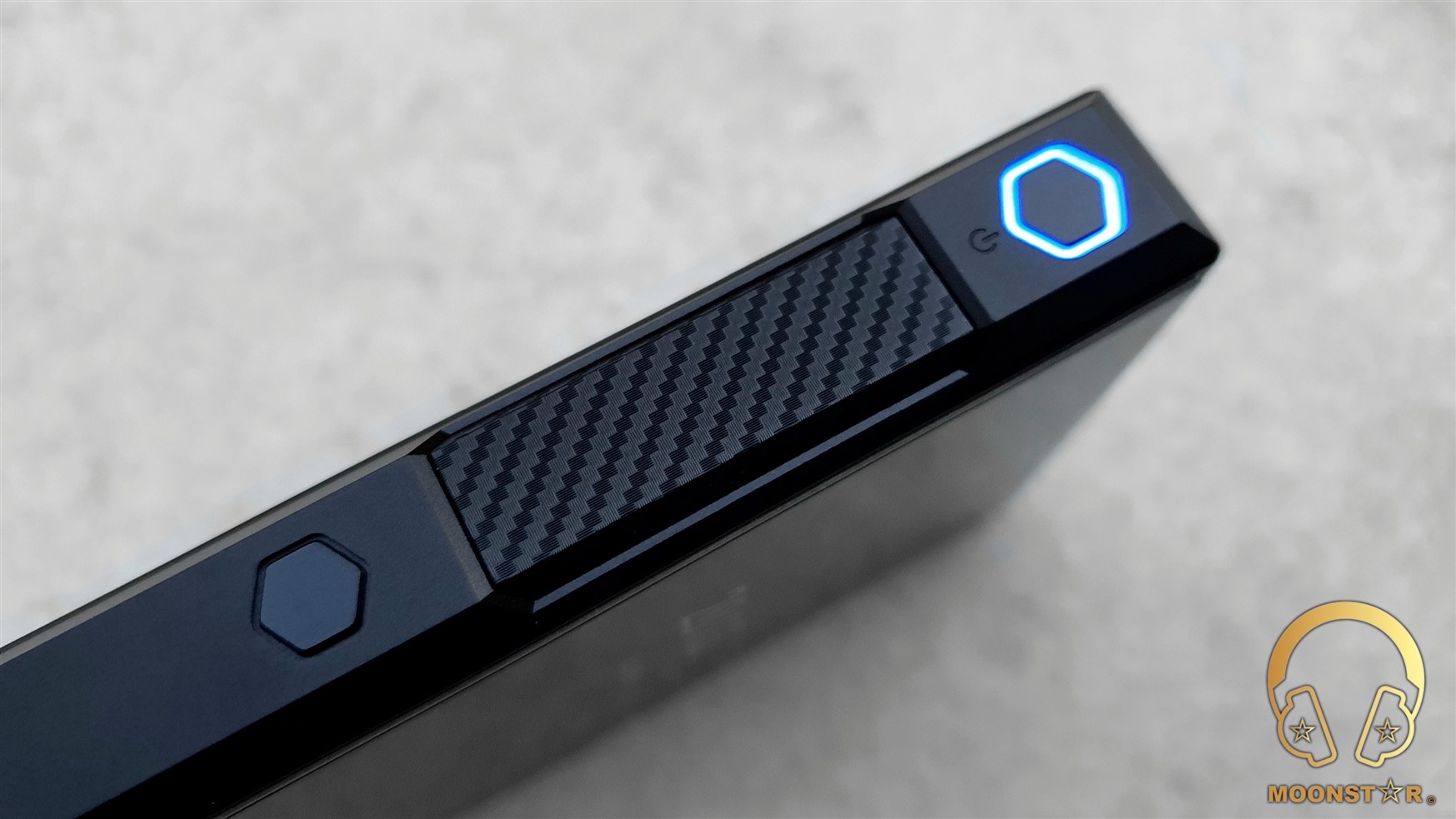
Here is also FiiO’s unique “all-in-one volume button + touch panel”, which has a beautiful looking carbon fibre surface. FiiO improved this innovative design that was used on the M11 Plus LTD with a Carbon Fiber design that offers now a more comfortable and precise volume adjustment.
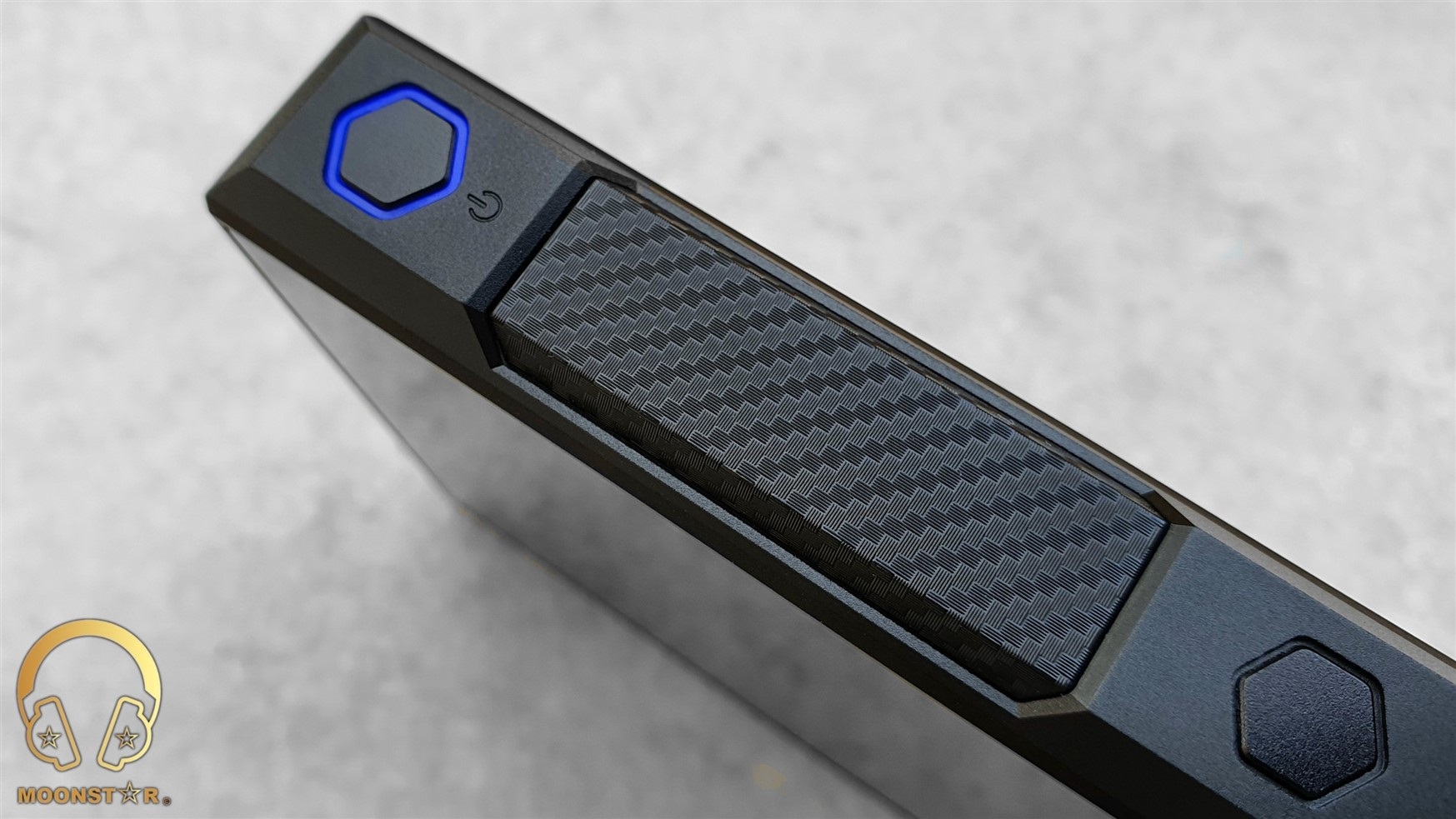
This interface supports both touch sensitive and mechanical actions for a precise volume up & down adjustment.
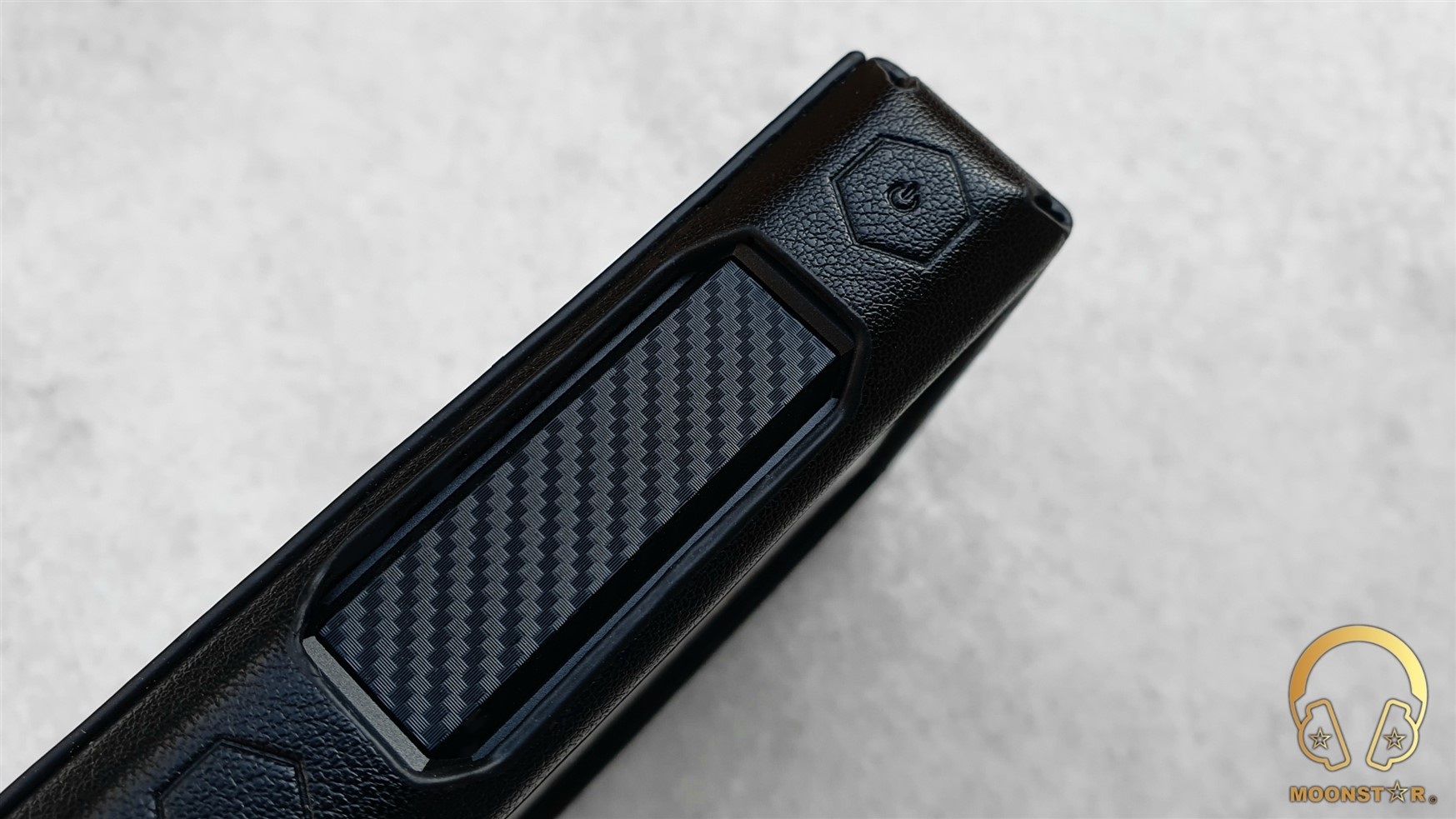
The right surface of the M11 Plus features a Hold Switch and 3 more buttons that are dedicated for actions like Play/Pause, Next and Previous track.
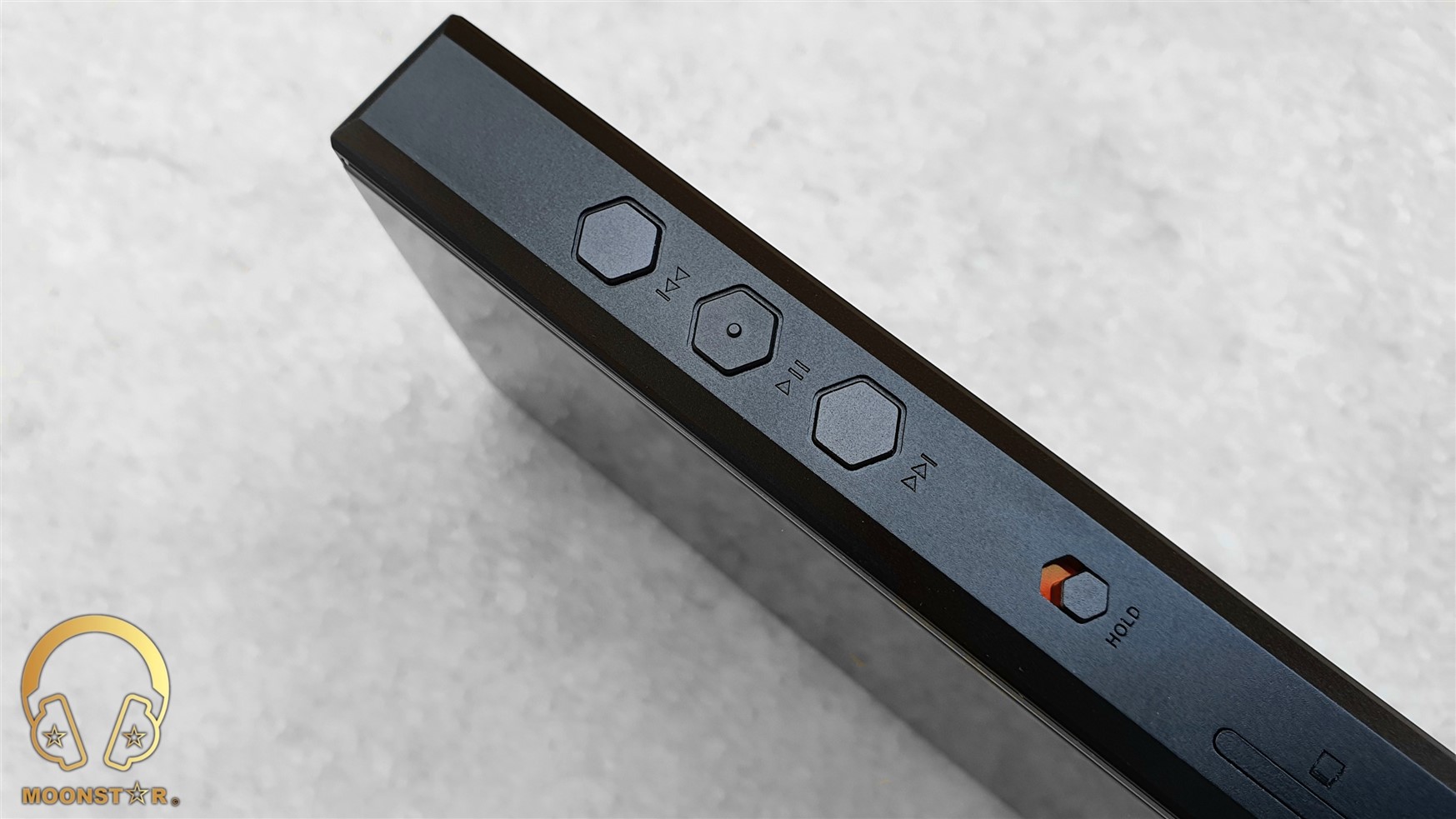
Here you can find a single micro SD card slot for storage expansion that supports storage cards with theoretically up to 2TB.
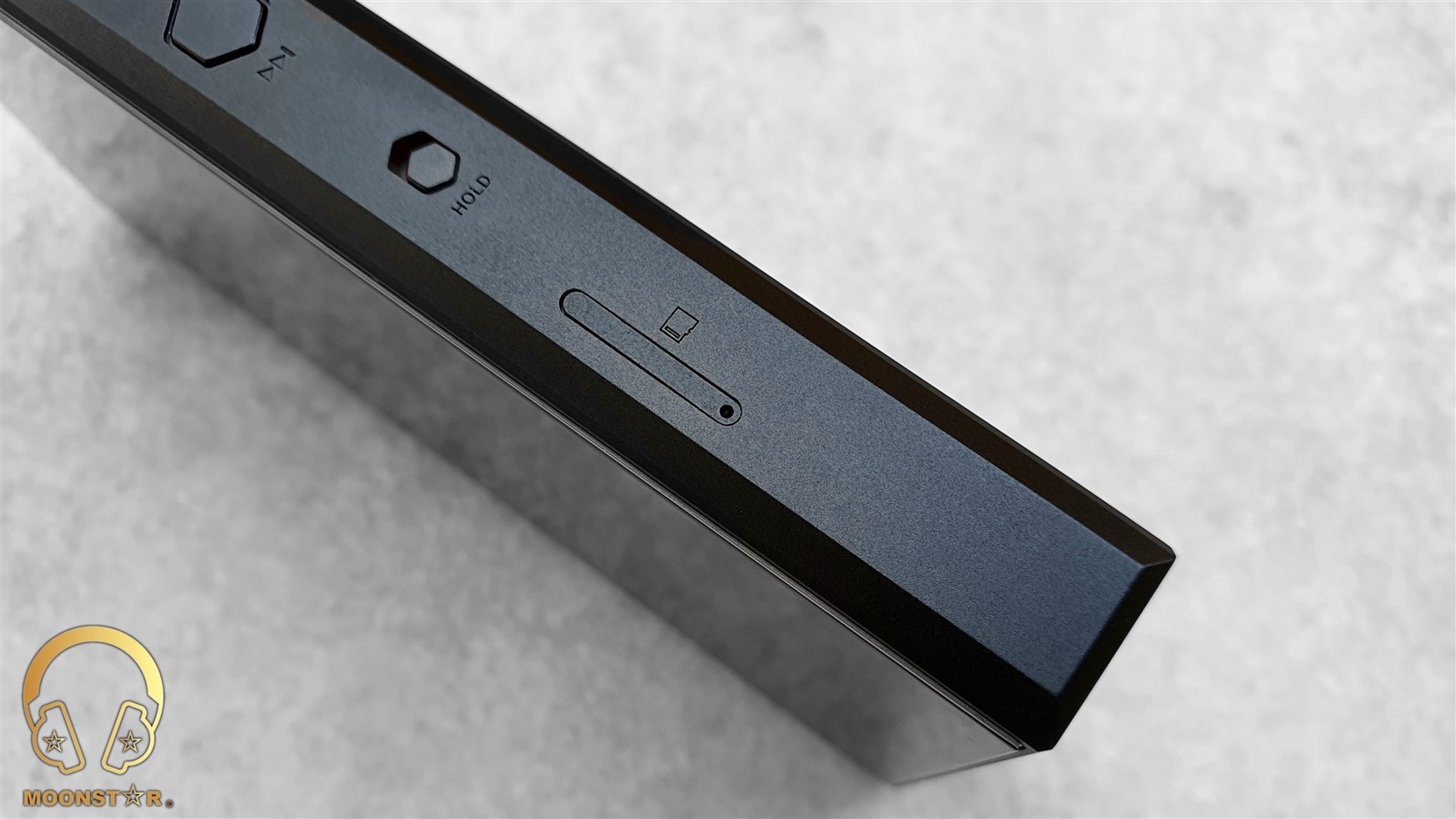
The rear side of the M11 Plus features a glass panel with a “Diamond Cut Textured” surface, which shows multiple colour effects from different angles.
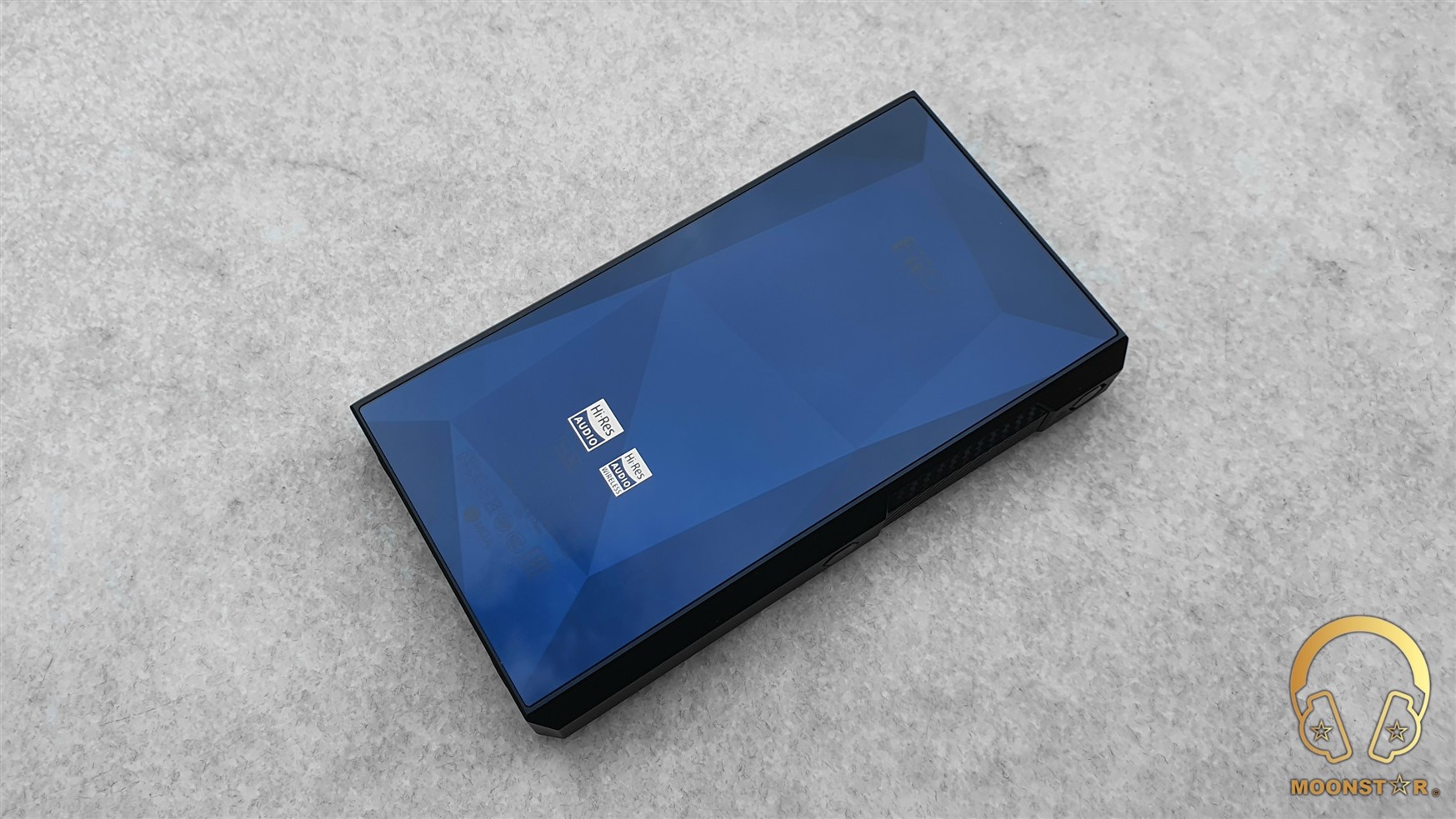
The device looks very robust any doesn’t show any imperfections like gaps, burrs or any openness, etc.
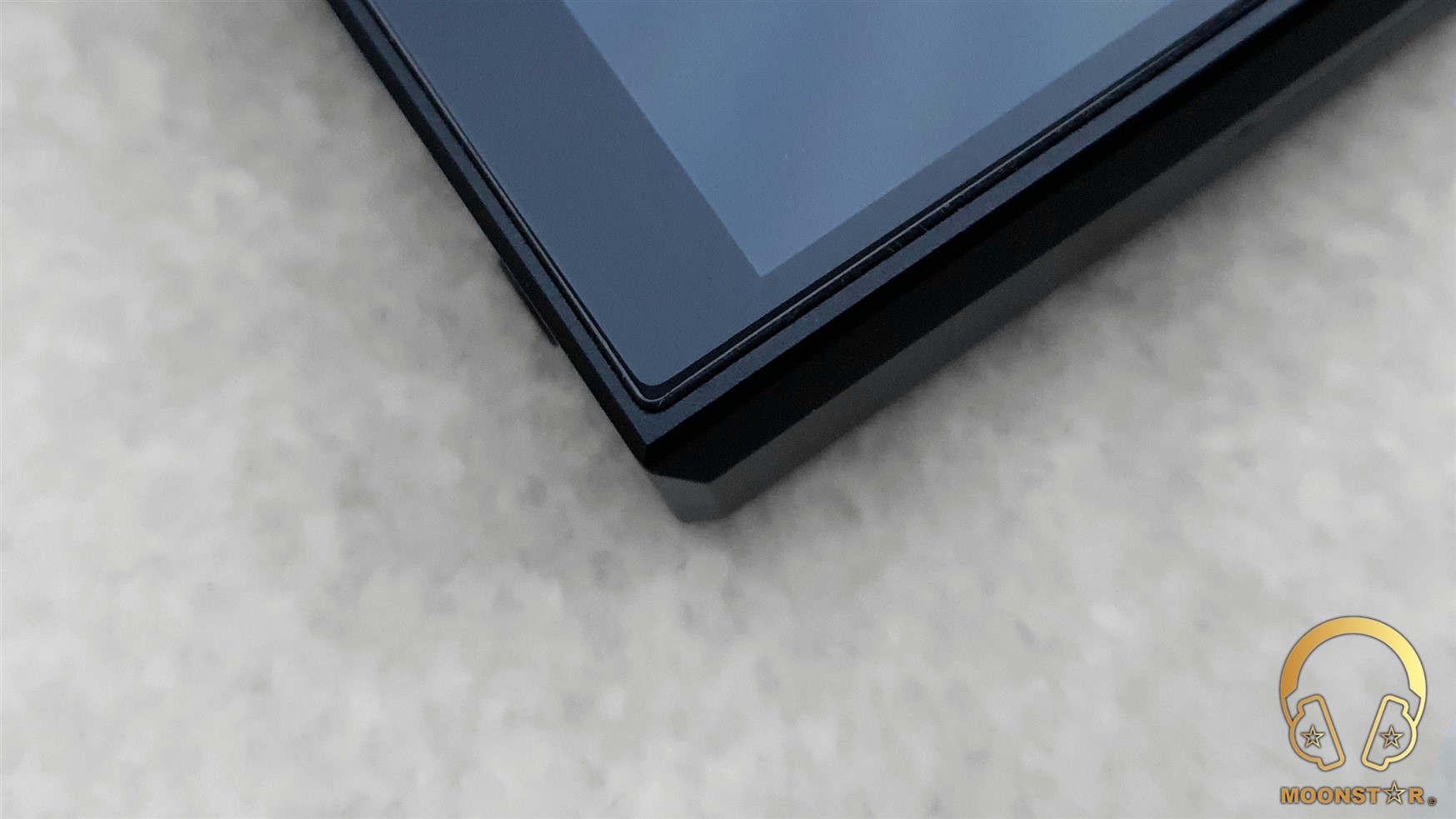
Some Technical Specifications:
- DAC : 2x ES9068AS
- CPU Model : Snapdragon 660 Octa-Core
- USB : XMOS XUF208
- Crystal Oscillator : 2x NDK Femtosecond Crystal Oscillator
- AMP : 2x THX AAA-78
- RAM : 4GB
- ROM : 64GB (46GB free 18GB reserved for OS)
- Screen : 5.5 inches (720*1440)
- Digital Out : USB Type-C
- Analog Outputs : 3.5mm Output for LO, PO & SPDIF, 2.5mm & 4.4mm Balanced Out
- Phone Out Power : 206mW @ 32 Ohm
- Balanced Out Power : 588mW @ 32 Ohm
- Output Impedance : ≤1Ω Single Ended / ≤2Ω Balanced
- Frequency Response : 5Hz – 90kHz (-5dB)
- THD+N : < 0.0006% (A-wt.)
- Noise Floor : <2µV Single Ended / < 3 µV Balanced
- Wi-Fi : 2.4 GHz & 5.0 GHz
- Bluetooth SoC : QCC5124
- Bluetooth Standard : 5.0
- Bluetooth Two-Way : SBC/AAC/APTX/APTX-HD/LDAC
- Battery : 6000mAh Li-polymer
- Battery Life : up to 14 Hours Single-Ended Output / 11.5 Hours Balanced Output
- Quick Charge Time : About 3 Hours (QC4.0)
- Dimensions : ~136.6×75.7×17.6mm
- Weight : about 295g
Supported Audio Formats:
The FiiO M11 Plus supports almost any traditional and modern audio format including MQA up to 8x unfold.
The full list of supported audio formats is below;
- DSD:DSD64/128/256(“.iso”,“.dsf”,“.dff”),DST iSO
- DXD:352.8K/24bit
- APE FAST/High/Normal:384kHz/24bit(MAX)
- APE Extra High:192kHz/24bit(MAX)
- APE Insane:96kHz/24bit(MAX)
- Apple Lossless:384kHz/32bit(MAX)
- AIFF:384kHz/32bit(MAX)
- FLAC:384kHz/32bit(MAX)
- WAV:384kHz/32bit(MAX)
- WMA LOSSLESS:96kHz/24bit(MAX)
- MP3,OGG,WMA,AAC, etc.
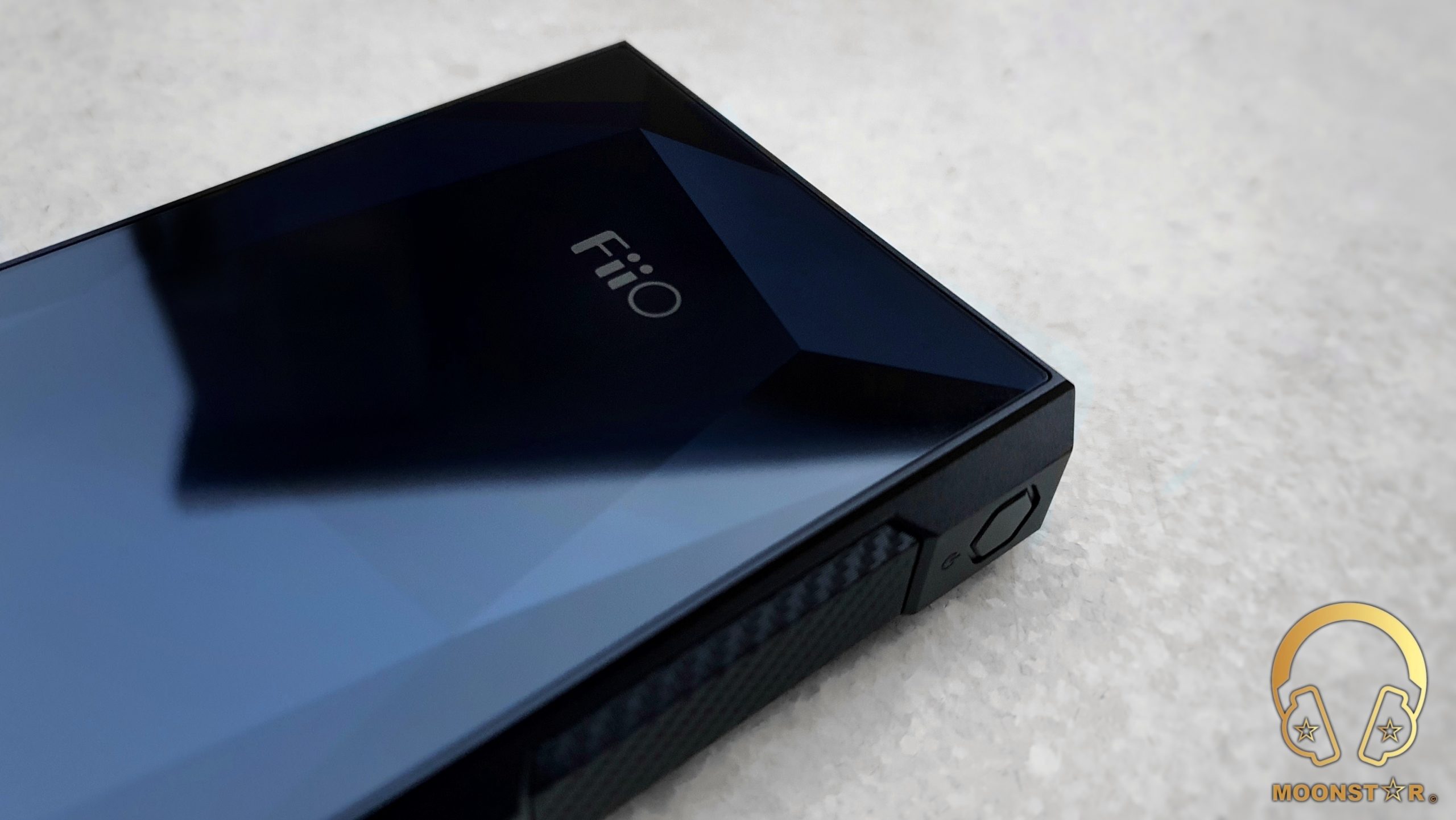
Hardware & Software Features:
The FiiO M11 Plus is a modern and advanced Portable DAP (Digital Audio Player) that features some impressive hardware and software specs, which I will now review for you.
A) ES9068AS DAC Chip & USB DAC Function:
FiiO has brought several updates with the new M11 Plus ESS variant. They not only have switched the DAC chipset from AK4497*2 to ES9068AS*2 DAC chips, they have also replaced the low-pass filter from OPA1662*2 to OPA927*2 matching the ESS DAC chipset. The chipset is now tuned to achieve high SNR ratings ensuring quality sound performance with cleaner background response.
It is tuned and adjusted for achieving improved performance, even better than the AKM counterpart with better Signal to Noise Ratio and Distortion ratings.
The FiiO M11 Plus offers USB DAC support that is compatible with MAC’s, Windows PC’s, Android and iOS devices. Windows PC’s do need the installation of an USB DAC driver that is available on FiiO’s website, while Android, iOS and MAC computers do not need any driver installation.
- Download link: https://www.fiio.com/Driver_Download
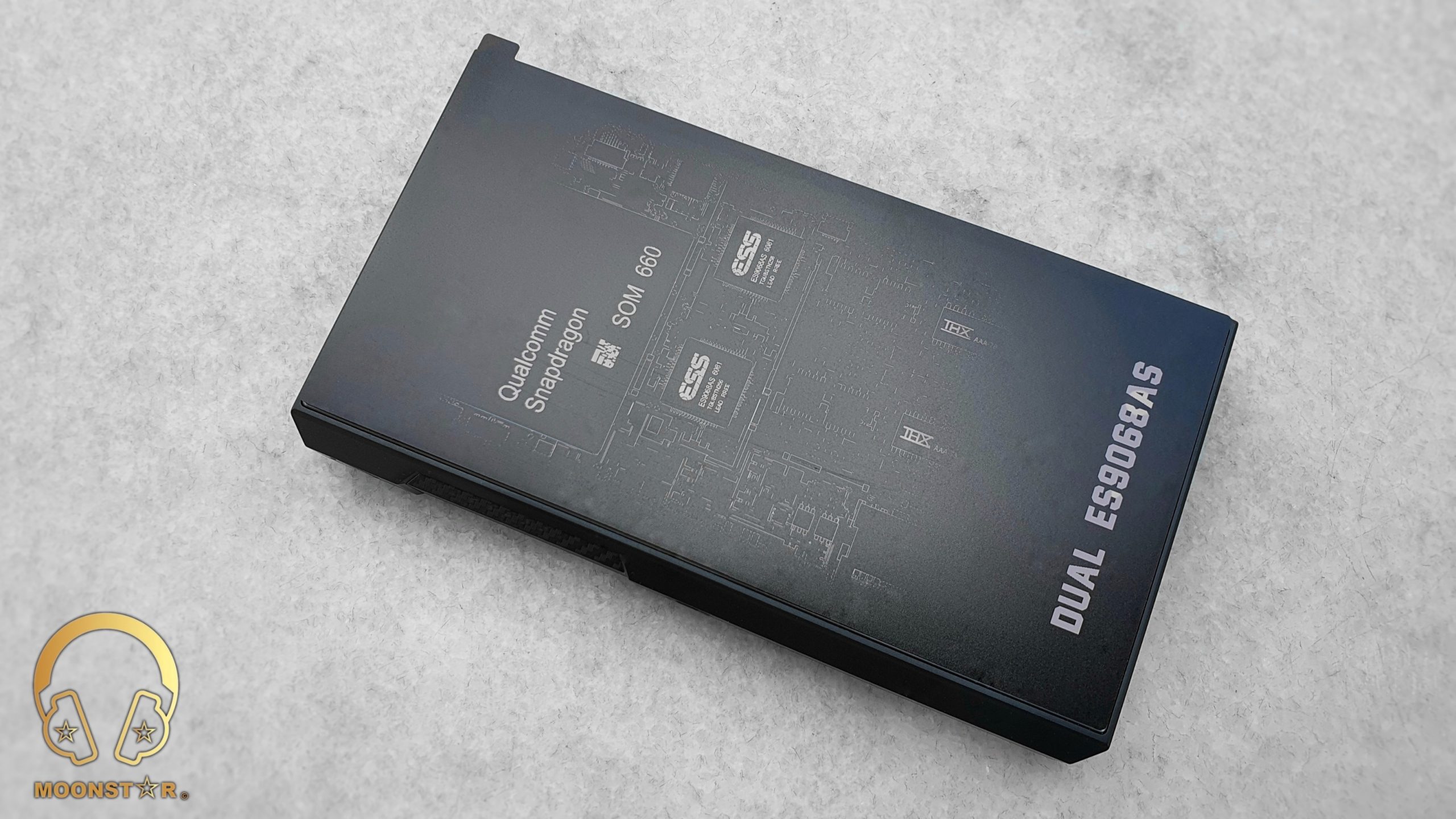
B) Snapdragon 660 CPU with Andreno 512 GPU + 4GB RAM:
The New M11 Plus is equipped with the Snapdragon 660 Octa-Core SoC that comes with a pretty capable Andreno 512 GPU, which is able to provide a smooth GUI (Graphical User Interface) for a Smartphone-Like user experience. The M11 Plus features also 4GB of RAM that will provide full functionality with the latest Android 10 OS.
The 18 GB of the internal storage is reserved for the OS (Operating System) of the device, while 46 GB’s are free to store your music files or for the installation of third party applications.
The M11 Plus is equipped with a Single Micro SD Card slot for storage expansion, which supports a theoretical expansion capacity of up to 2TB.
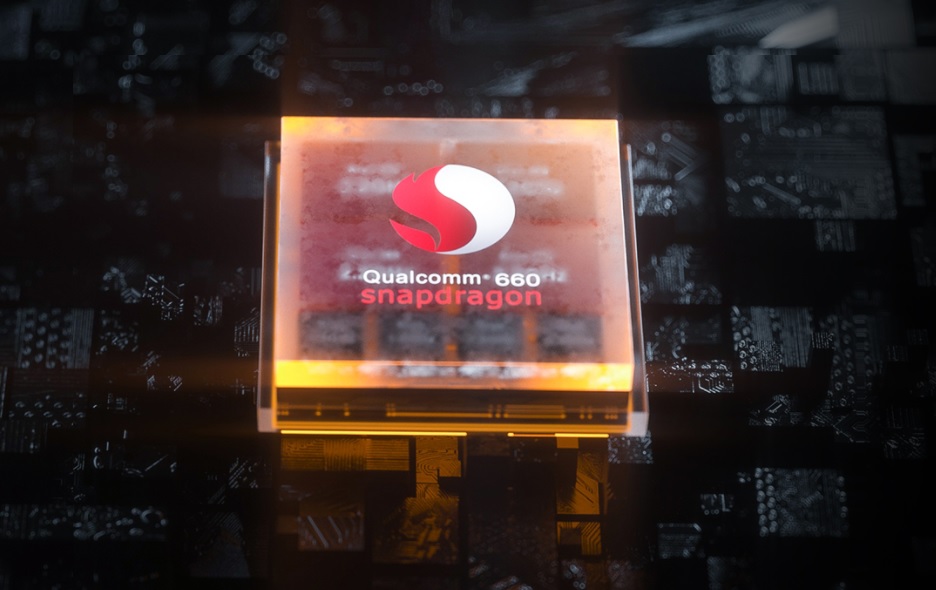
C) Outputs & Amplification:
The FiiO M11 Plus comes with the THX AAA-78 headphone amplifier module, which will deliver a higher output performance compared to the AKM variant with an output power rating of up to 660mW@32Ω of load. The Low-pass filter chip has been switched from OPA1662 to OPA927.
Here are some output specifications;
Line Out:
- THD+N : SE ≤0.0006%(1kHz/10kΩ)/ Balanced ≤0.0004%(1kHz/10kΩ)
- SNR : SE ≥118dB(dbA)/ Balanced ≥125dB(dbA)
- Crosstalk : SE ≥105dB(1kHz/10kΩ)/ Balanced ≥104dB(1kHz/10kΩ)
- Frequency response : SE 20Hz~50kHz (-0.5dB)/ Balanced 20Hz~50kHz(-0.5dB)
- Noise floor : SE ≤2.5μV(dbA)/ Balanced ≤2μV(dbA)
- Line Out level : SE 2.0V(1kHz/10kΩ)/ Balanced3.0V(1kHz/10kΩ)
3.5mm Headphone Out (@ High Gain):
- THD+N : ≤0.00054%(1kHz/32Ω)
- SNR : ≥122dB(dbA)
- Frequency response : 20Hz~20kHz(-1dB)
- Noise floor : ≤2.5μV(dbA)
- Output Impedance : ≤1Ω(32Ω)
- Output Power : ≥300mW @16Ω / ≥210mW @32Ω / ≥33mW @300Ω (THD+N<1%)
- Crosstalk : ≥76dB(1kHz/32Ω)
4.4mm & 2.5mm Balanced Out (@ High Gain):
- THD+N : ≤0.00085%(1kHz/32Ω)
- SNR : ≥126dB(dbA)
- Frequency response : 20Hz~80kHz(-1dB)
- Noise floor : ≤2.5μV(dbA)
- Output Impedance : ≤2Ω(32Ω)
- Output Power : ≥400mW @16Ω / ≥ 660mW @32Ω / ≥90mW @300Ω (THD+N<1%)
- Crosstalk : ≥111dB(1kHz/32Ω)
The recommended headphone impedance for the M11 Plus is 16~150Ω for the 3.5mm Single Ended headphone output and 16~300Ω for the 2.5mm + 4.4mm Balanced outputs.
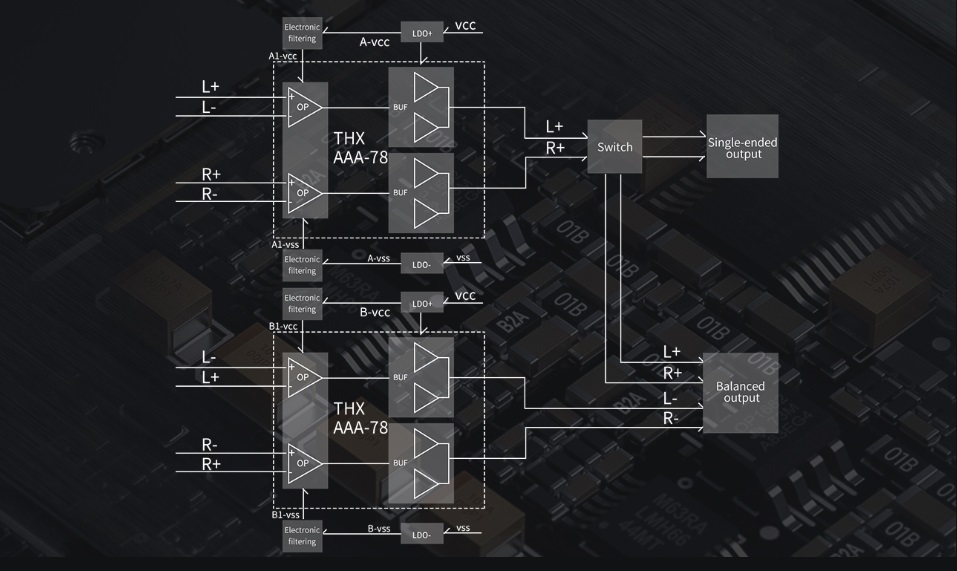
D) Wireless Connectivity:
The FiiO M11 Plus features a build in Wi-Fi antenna which supports the 802.11 b/g/n/ac protocols and 2.4GHz and 5.0 GHz frequency standards. The download speed, connectivity range and stability is the best I have experienced to date with a Digital Audio Player and performs pretty close to modern mobile phones.
The M11 Plus utilizes also Qualcomm’s QCC5124 Bluetooth SoC that offers High-Res Two-Way Bluetooth support with the BT5.0 standard. This BT SoC is able to transmit HWA/LDAC/aptX HD/aptX/SBC codec’s and to receive codec’s in AAC/SBC/LDAC quality.
The M11 Plus can be connected to Bluetooth transmitting devices like a mobile phone, working as a Bluetooth DAC/Amplifier.
The stabile Bluetooth operating distance of the M11 Plus is about 10 meters when I do connect it to Bluetooth devices like the Sony WF1000XM4 or FiiO UTWS5. What I also really like about the BT connectivity of the M11 Plus is the very low latency when I do watch to YouTube or Netflix Videos.
Please note that I didn’t have heard any waterfall noise issue that could be caused by the Wi-Fi antenna and any remarkable Bluetooth connection droppings with my sample during this review.
1. AirPlay & Wi-Fi file transfer:
The FiiO M11 Plus is able to play your songs stored on PC or NAS wirelessly through DLNA, or via AirPlay with iOS devices. You can also transfer your songs wirelessly to the M11 Plus by using the Wi-Fi transfer function which is a nice addition.
2. Anti-interference Circuit Design:
The FiiO M11 Plus adopts a new internal layout with a modular circuit design that feature its own shielding cover, in order to separate interferences of the digital and analog portions. This design was created to ensure that that does parts do not interference with each other.
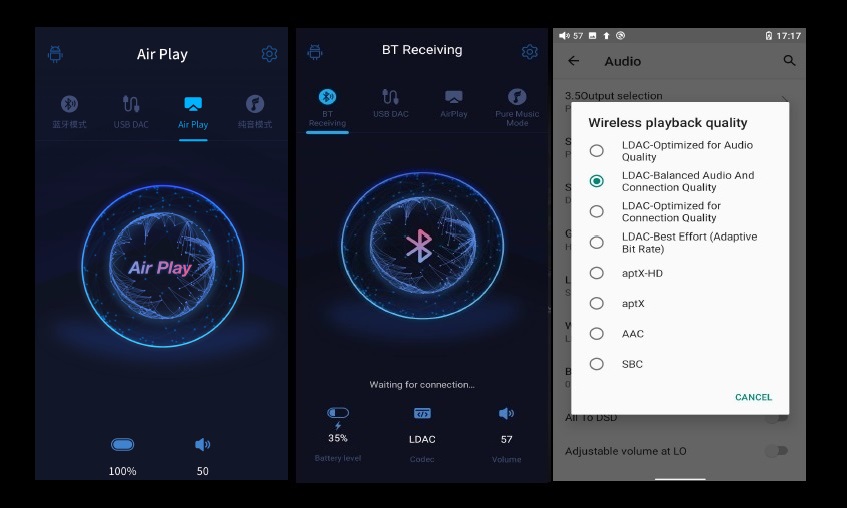
E) Battery Life:
FiiO M11 Plus ESS features a 6000mAh Li-Polymer battery, which supports Quick Charge QC3.0/4.0 that takes about 3.5 hours. The battery life of the new M11 Plus is improved from 11.5 hours on the AKM variant to up to 14 hours over the 3.5mm Single Ended output, while the 4.4mm & 2.5mm Balanced output drains the battery in around 11.5 – 12 hours.
Testing Conditions:
- Volume: 70 / Gain: Low / File: MP3 44.1 kHz/16bit / Screen: Off
2. Software & GUI:
The combination of Android 10 and relative capable Snapdragon 600 SoC + 4GB of Ram makes the FiiO M11 Plus to a DAP with a pretty fluid GUI. The fairly customized Android OS of the M11 Plus comes with pre-installed applications like Google Play Store, Chrome Browser, Gallery, Clock, Technical Support, FiiO Application Store, etc.

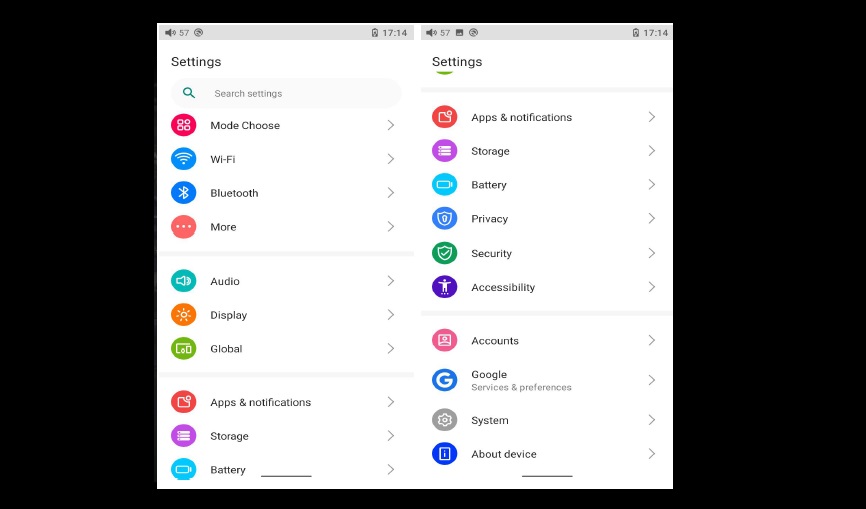
It’s great to see that Google Play Store is now pre-installed supported out of the box that gives you access to third party Streaming Services like Spotify, Tidal, Qobuz, Deezer, Apple Music and more. You can even install applications like Netflix, Amazon Prime or YouTube to watch your favorite TV shows, video clips or movies.
FiiO offers has also its own application that is called Application Store, where you can find all Music and Radio Streaming Services or Thirty Party APP Stores like APKPure, CoolApk or Yingyongao under one page.
FiiO Music Player is another highlight of the M11 Plus that comes with tons of features, settings and a very nice Graphical User Interface (GUI).
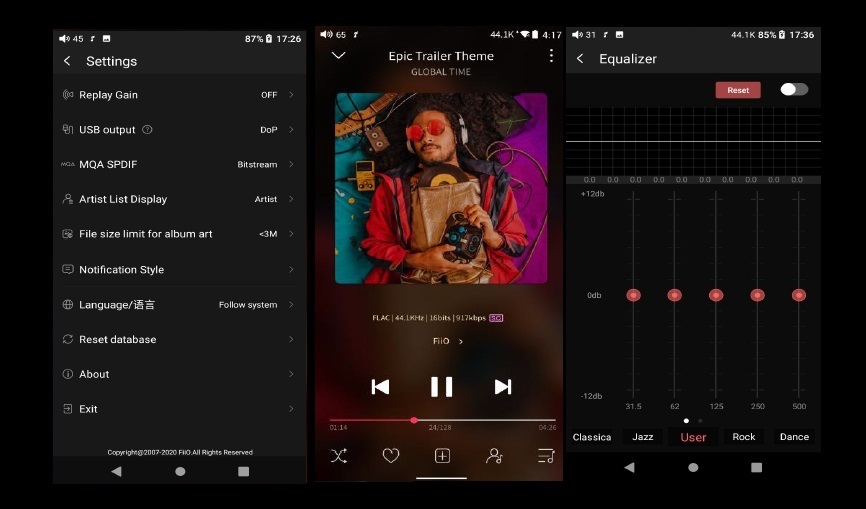
The FiiO M11 Plus supports five working modes, including Android mode, Pure Music mode, AirPlay, USB DAC mode and Bluetooth Receiving mode. The default is Android mode when the device is powered on for the first time, which can be switched to other modes on the drop-down or settings menu.
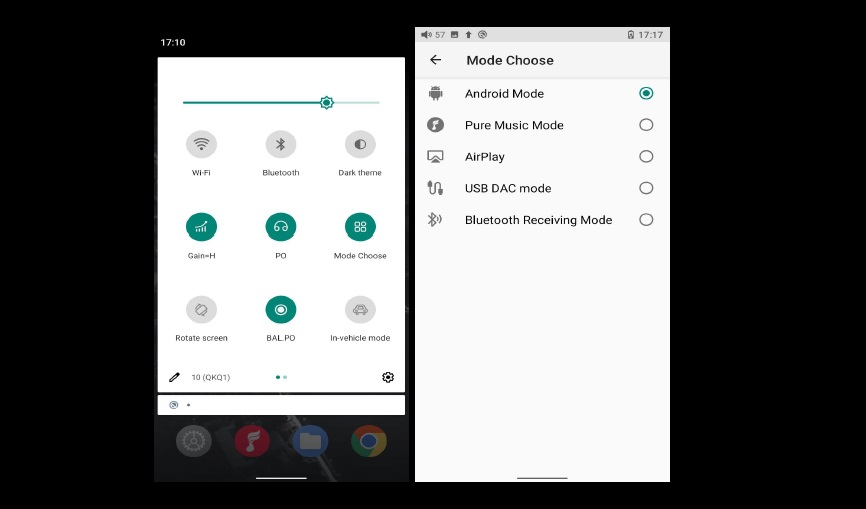
All-in all, the M11 Plus offers a very user friendly and familiar UI (User Interface) that gets constantly updates. What I also really like is the Technical Support Menu that gives you a quick access to FW Updates (OTA and Local), Quick Start Guide, Online Feedback and many more, which is a nice addition.

Full List of Remarkable Features:
- Android 10 OS
- MQA 8X Decoding Support
- ES9068AS*2 Dual DAC Chip’s
- THX-AAA 78*2 Headphone Amplifier.
- Snapdragon 660 CPU (Octa-Core)
- 6th Gen Honeycomb Design
- 5” Bezel-less Touch-Screen with 18:9 ratio
- New-Gen Interactive Intelligent Volume System with an upgraded carbon-fiber panel.
- New Digital Audio Purification System (DAPS) with Self-Developed 4th Gen FPGA+NDK Femtosecond crystal oscillators
- High-Res Two-Way Bluetooth Support (V5.0 Connectivity)
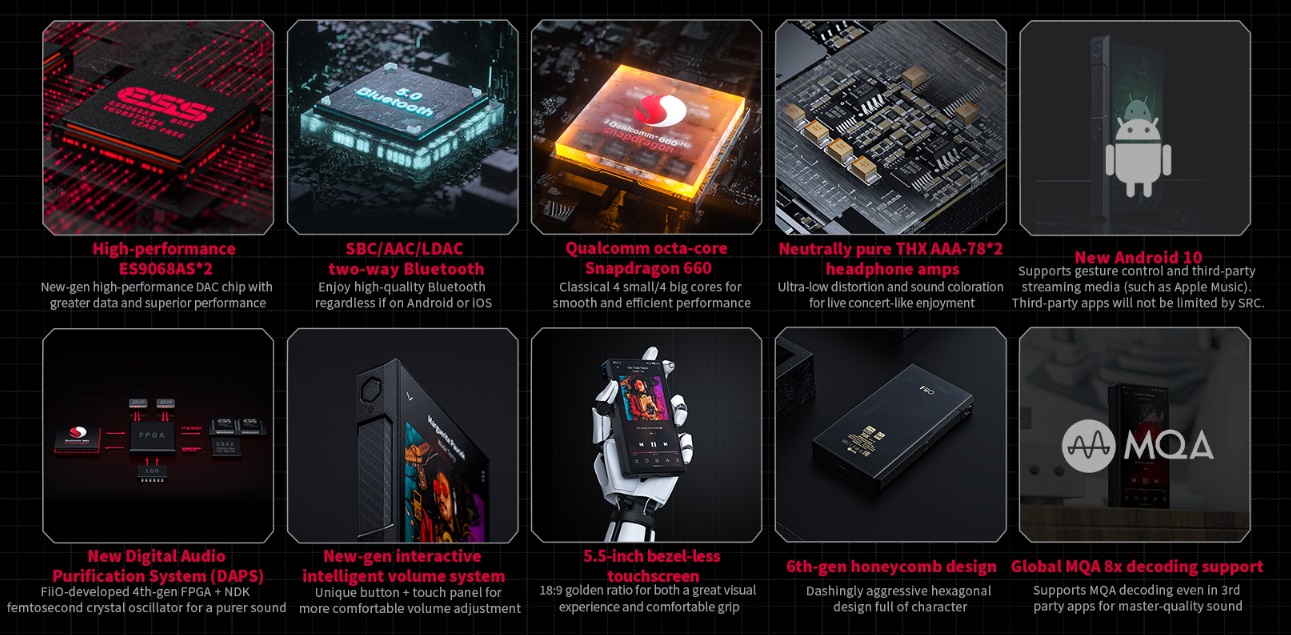
Equipment’s used for this review:
- DAP’s : FiiO M11 Plus, Sony WMA1, FiiO M11 Pro
- IEM’s : FiiO FD7, FiiO FH9, Meze Audio Rai Penta, Kinera URD, Moondrop Variations
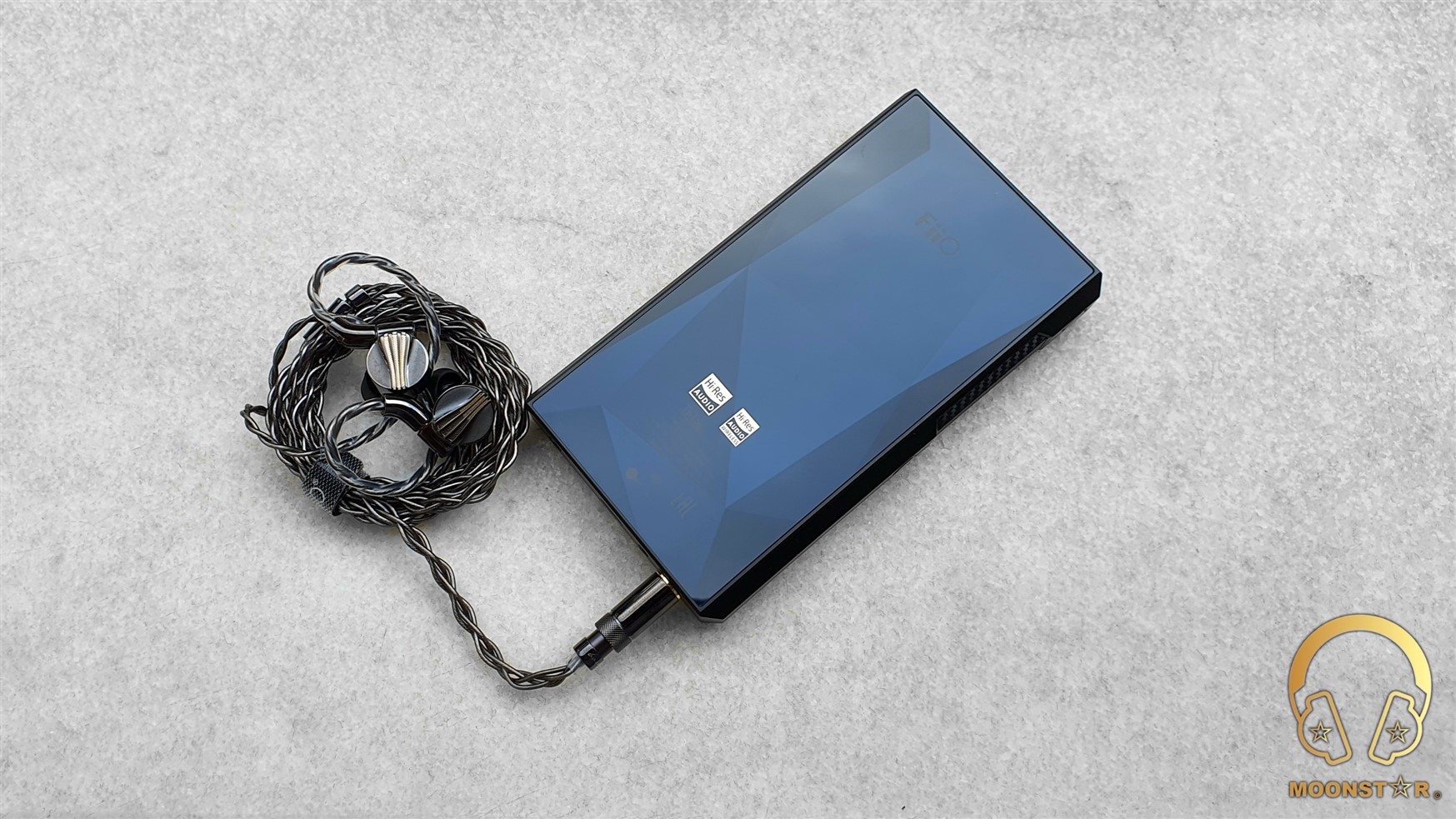
Albums & tracks used for this review:
- Adele – My Little Love (Spotify)
- Randy Crawford – On Day I Will Fly Away (Flac 16bit/44.1kHz)
- Hayley Westenra – Odyssey Album (Dezzer HiFi)
- Dionne Warwick – Walk On By (Flac 16bit/44.1kHz)
- Sarah McLachlan – Angel (Flac 24bit/48kHz)
- Sertap Erener – Aşk (Flac 16bit/44.1kHz)
- Edith Piaf – Non Je Ne Regrette Rien (Flac 16bit/44.1kHz)
- Diana Krall – So Wonderful (DSF)
- Aretha Franklin – I Say A Little Payer (Flac 24bit/96kHz)
- David Bowie – Heroes (Flac 24bit/192kHz)
- Elton John – Rocket Man ((Flac 24bit/96kHz)
- Barry White – Just The Way You Are (Flac 24bit/48kHz)
- Isaac Hayes – Walk On By (Flac 16bit/44.1kHz)
- Sting – Englishman in New York – (Flac 24bit/48kHz)
- Eric Clapton – Wonderful Tonight (Flac 24bit/96kHz)
- B.B. King – Riding With The King (Tidal Hi-Fi)
- Dave Gahan – Kingdom (Tidal Hi-Fi)
- U2 – Sunday Bloody Sunday (Flac 16bit/44.1kHz)
- Bro Safari, UFO! – Drama (Deezer HiFi)
- Armin Van Buuren – Vini Vici (Flac 16bit/44.1kHz)
- Really Slow Motion – Deadwood (Deezer HiFi)
- Jo Blankenburg – Meraki (Spotify)
- Lorde – Royal (Flac 24bit/48kHz)
- Toutant – Rebirth (Deezer HiFi)
- Portishead – It Could Be Sweet (Spotify)
- Charly Antolini – Duwadjuwandadu (Flac 24bit/192kHz)
- Michael Jackson – Billie Jean (Flac 24bit/192kHz)
- Gogo Penguin – Raven (Flac 24bit/192kHz)
- 2Cellos – With or Without You (Spotify)
- Ferit Odman – Look, Stop & Listen (Flac 24bit/192kHz)
- Chopin – Nocturn No. 20 In C-Sharp Minor (Flac 16bit/44.1kHz)
- Fazıl Say – Nazım Oratoryosu (Live) (Flac 16bit/44.1kHz)
- Vivaldi – Le QuarttroStagioni “The Four Season” (Deezer HiFi)
- Otto Liebert& Luna Negra – The River (Flac 24bit/192kHz)
- Lunatic Soul – The Passage (Flac 16bit/44.1kHz)
- Deftones – My Own Summer (Shove it) (Flac 16bit/44.1kHz)
- Metallica – Sad but True (Flac 24bit/96kHz)
- Opeth – Windowpane (Flac 16bit/44.1kHz)
- Megadeth – Sweating Bullets (Tidal Hi-Fi)
- Rush’s – Leave That Thing Alone (Flac 16bit/44.1kHz)
- Slayer – Angel of Death (Spotify)s
- Liquid Tension Experiment 2 – Acid Rain (Spotify)
- Yosi Horikawa – Bubbles (Spotify)
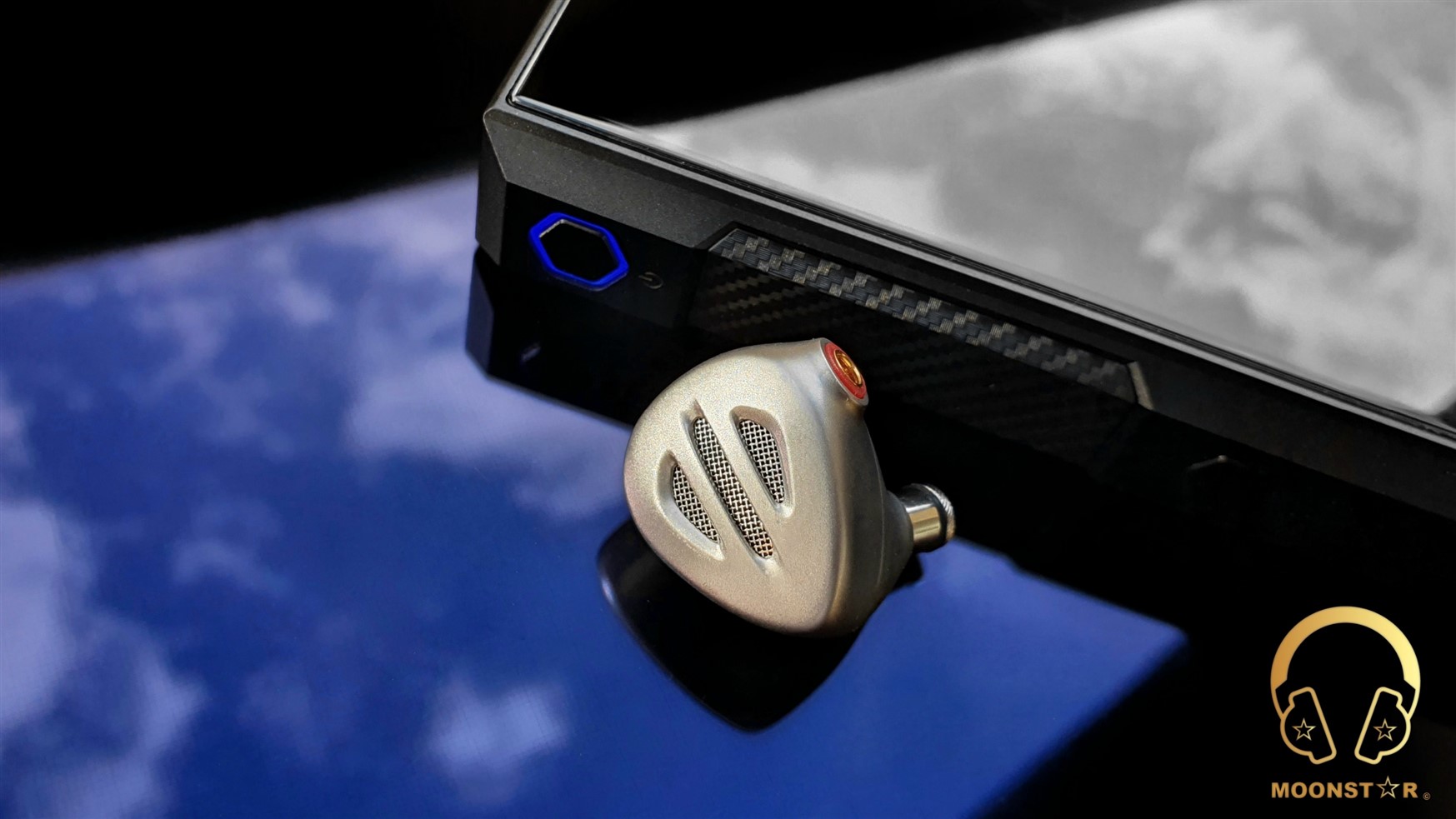
The Sound:
The FiiO M11 Plus shows a quite natural tonality with a hint of warmness that adds a nice sense of coloration to the overall presentation that is not overdone. It offers a pretty transparent and detailed sound profile with decent level of dynamics and resolution from the lows to up to the highs that show a good synergy with almost any earphone/headphone I have listen to it.
This review has been written after a burn-in period of about 150 hours. The sound impressions below are mainly based on my impressions over the with the 4.4mm Balanced Output of the device paired with IEM’s like the FiiO FH9 & FD7, Meze Rai Penta, Kinera URD and Moondrop Variations.
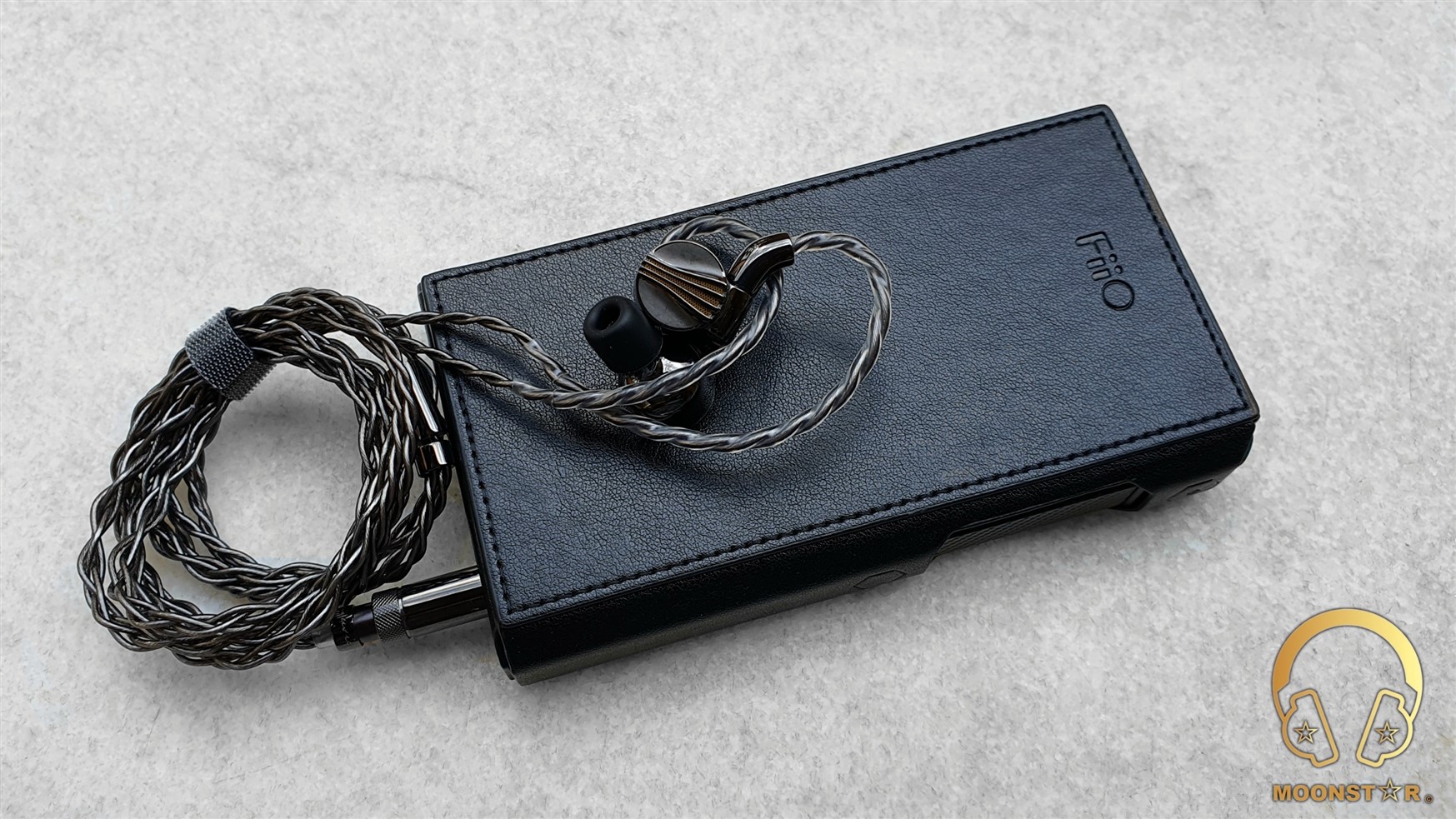
Bass:
The FiiO M11 Plus has a pretty neutral and dynamic subbass response that offers a good level of depth and emphasis when called upon. For example; songs such like Massive Attack’s “Angel”, Lorde’s “Royals” or Jo Blankenburg’s “Meraki” are show with an great sense of depth and rumble when I do pair the deice with In-Ear Monitors like the FiiO FH9 and FD7 or with Moondrop’s Variations. The subbass presentation stands out with its clean character and pretty fast decay and doesn’t show any remarkable negative conditions such like as muddiness or mixings.
The midbass region of the FiiO M11 Plus offers a fairly smooth, powerful and dynamic response. It is impactful yet controlled and doesn’t show any audible midbass hump or mixings when I do listen to midbass intensive tracks like Really Slow Motion “Deadwood” or Armin Van Buuren’s “Vini Vici”. The general midbass presentation of the M11 Plus can be described as transparent, clean and detailed, along with a decent sense of musicality that was especially audible when I have paired the device with IEM’s like the Kinera URD and Meze Audio Rai Penta.
Went it comes to the instrument presentation in this area, I can say that bass guitars, drums and trumpets are reproduced with an efficient grade of speed and intensity, while a contrabass is presented in a pretty crisp and detailed manner.
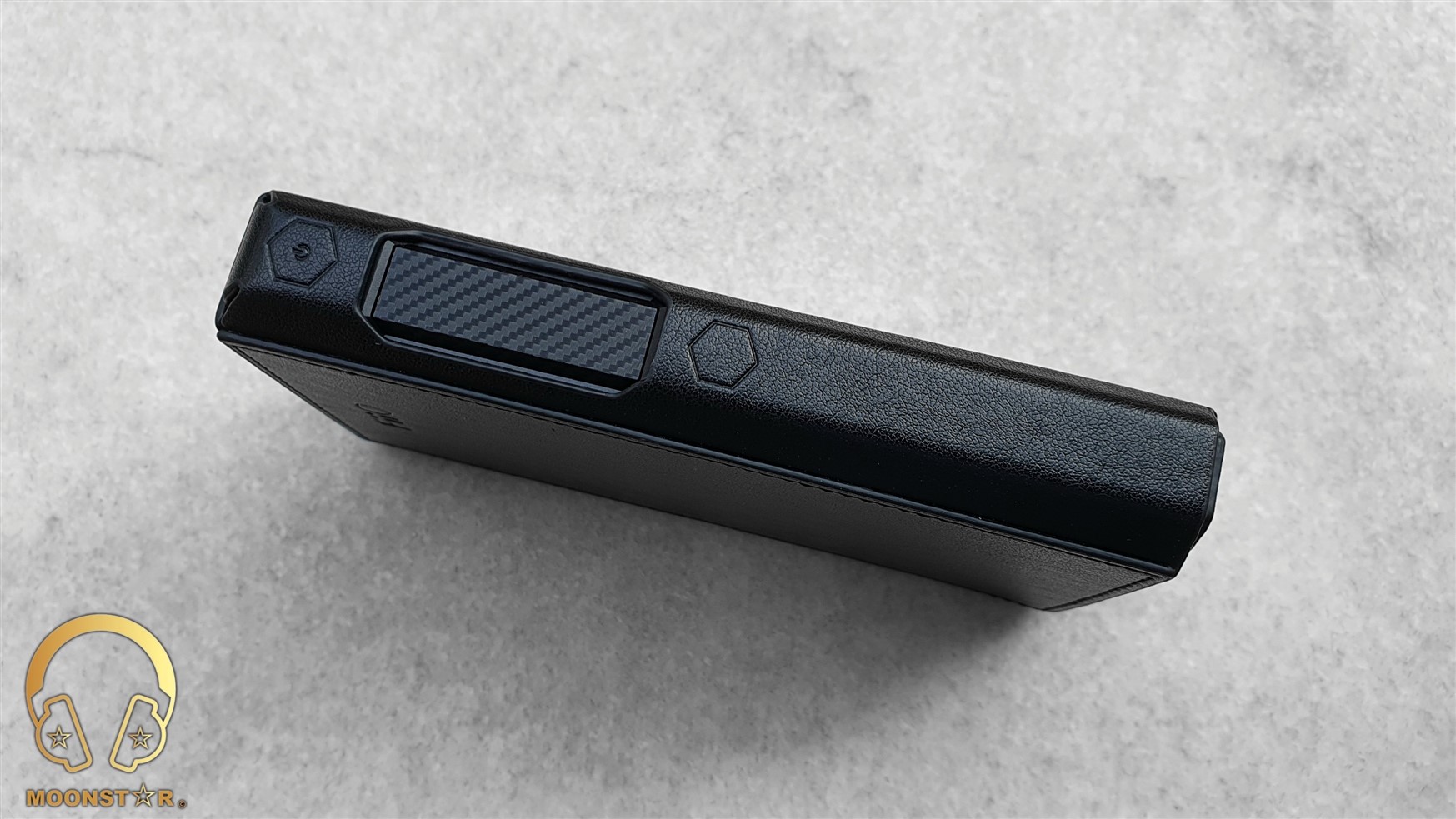
Midrange:
The FiiO M11 Plus shows a pretty transparent, airy and neutral midrange presentation with a slightly hint of warmness that comes from the lower midrange area that adds the overall presentation in this area a nice sense of coloration to cerate a more musical atmosphere.
Both female and male voices do sound pretty realistic and lively, while female voices are a bit more in the foreground due to the highly dynamic/energetic upper midrange character.
The lower midrange of the M11 Plus offers an efficient level of body and depth that is not overdone. Especially the clarity and resolution is remarkable, when I do listen to vocals or to instruments like cellos, violas or electro guitars. Male vocals from Barry White and Isaac Hayes to Sting and Eric Clapton are reproduced with a decent sense of depth and intensity.
The upper midrange is slightly more emphasized compared to the lower midrange register. This area offers a great sense of dynamism, an above average level resolution and extension, without to show any remarkable sibilance or over brightness when I do listen to female voices or to instruments such like clarinets, side flutes, pianos or violins. For example, female vocals such like Adel, Diana Krall, Edith Piaf or Sertap Erener are reproduced in a pretty clean, lively and detailed manner, especially when I pair it with In-Ear Monitors like the FiiO FH9, Moondrop Variatons or Meze Audio Rai Penta.
The overall midrange presentation of the FiiO M11 Plus can be described as highly versatile, natural and dynamic, which offers also a decent grade of transparency, airiness and resolution.
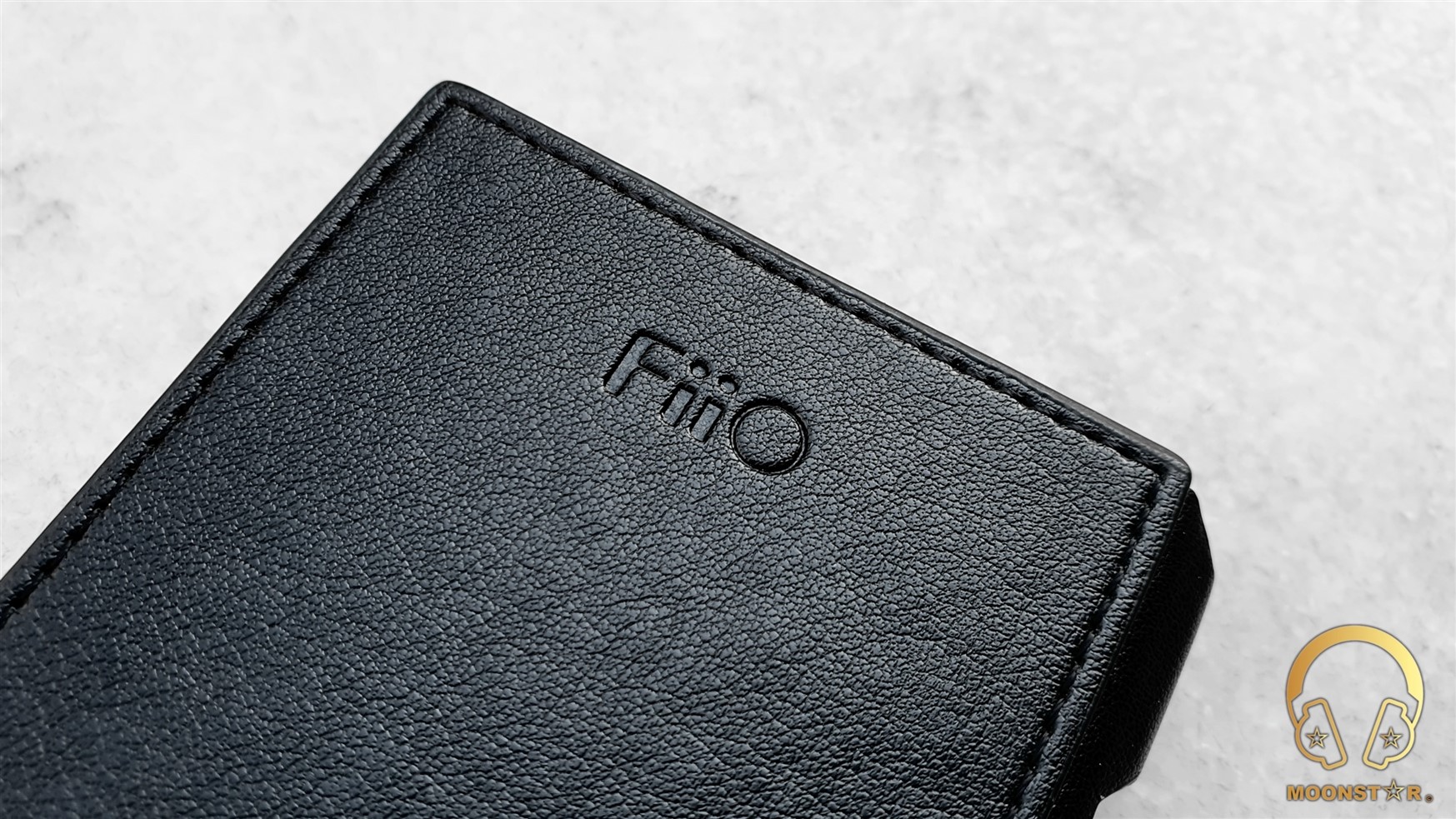
Treble:
The treble range of the FiiO M11 Plus shows a relative bright and energetic yet controlled response with good level of clarity and decent sense of airiness and sparkle. The general presentation of this region is quite detailed and crisp, while it is also pretty comfortable to listen to, especially hen I do pair it with IEM’s like the FiiO FD7, Kinera URD and Meze Rai Penta that do show a great synergy.
The transitions from the upper midrange that is pretty energetic, towards the lower treble region are in general controlled when instruments such like electro guitars are played with high level of distortion.
Instruments like Hi-hats do sound fairly pronounced and it was quite easy to count the hits, when I have listened to the FiiO FH9 or Moondrop Variations in complex passages. Crash and ride cymbals on the other hand are fast, pretty controlled and do are reproduced with a good grade extension. There is no interference when the piano is accelerating in Jazz songs; the hits are clear and pronounced.
The level of airiness in the treble range is pretty high, while the intensity decreases from the lower treble region towards the upper treble area in a fairly controlled manner. All in all, the overall treble performance of the FiiO M11 Plus fulfills my expatiations from a Digital Audio Player at this price level.

Soundstage & Imaging:
The FiiO M11 Plus offers a pretty realistic and expansive soundstage atmosphere, and a decent performance in terms of separation and positioning of instruments and vocals, thanks to the pretty wide and airy soundstage. The neutral air between the instruments and the clean/black background of the M11 Plus creates ideal conditions to listen to songs with lots of instruments and complex passages.
Some Comparisons:
FiiO M11 Plus versus FiiO M11 Pro:
The FiiO M11 Pro was one of my favorite DAP’s when it came out with its fast UI, good battery life, stabile connection and decent sound performance for its price. However, the new M11 Plus outperforms the M11 Pro in almost any area.
The M11 Plus offers a more mature sound profile that is more natural and versatile compared to those of the M11 Pro, which shows a higher grade of coloration. The M11 Plus is with no doubt superior in terms of technicality, overall resolution and naturalness.
The subbass region of the M11 Pro is slightly more pronounced, while it is missing the authority and clarity that the M11 Plus now offers. Both DAP’s are successful when it comes to the depth and impact of the midbass region. However, the M11 Plus sounds slightly natural and detailed in this area with better sense of layering and separation.
The FiiO M11 Pro has a slightly warmer midrange tonality that sounds also a bit more recessed in this area compared to the M11 Plus, which offers a better sense of transparency, airiness and dynamism, especially in the upper midrange register.
The lower midrange of the M11 Pro is lightly more highlighted but less transparent compared to the M11 Plus when I do listen to male vocals or to instruments like acoustic guitars or violas. The upper midrange of the M11 Plus is more pronounced, energetic and detail, which was pretty audible when I do listen to female voices or pianos, flutes or trumpets.
Both the FiiO M11 Pro and the M11 Plus do sound quite similar in the treble region. However, the M11 Plus has the upper hand in terms of micro detail retrieval, extension of instruments and general authority in this area, especially in the upper treble register.
The M11 Plus offers a more natural and out of the head soundstage atmosphere with better sense of airiness and separation. The soundstage of the M11 Plus shows a higher level of wideness, while the depth of both devices is fairly similar.
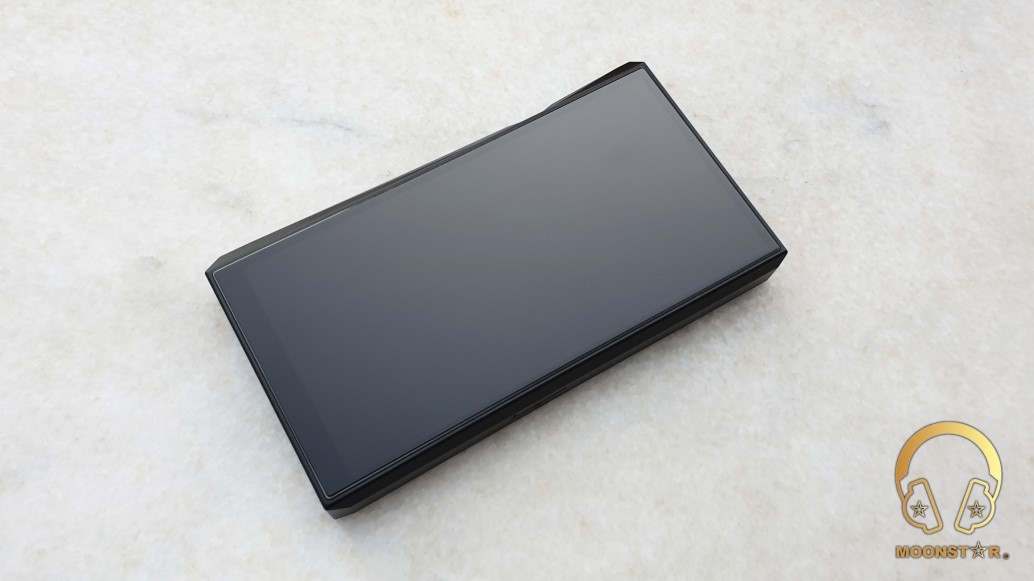
FiiO M11 Plus versus Sony WM1A (No Software Mode):
The Sony WM1A is another decent sounding Digital Audio Player that still very popular in the audiophile community especially after some thirty part software modes. It reflects Sony’s warmish and musical sound signature that is highly praised.
The WM1A has a warmer and smoother tonality and sounds in general a bit fuller compared too the M11 Plus that offers a more neutral tonality and energetic presentation towards the upper midrange region.
The subbass region of the WM1A is a tad deeper in response and shows a bit more rumble compared to the M11 Plu. The M11 Plus on the other hand stands out in terms of decay and clarity in this area, while both devices are pretty equal when it comes to the resolution. The midbass region of WM1A is slightly more highlighted and impactful, while it is missing the resolution and authority that the M11 Plus offers, when I do listen to strings like violas and bass guitars.
The midrange of the FiiO M11 Plus shows closer to neutral tonality and has a more transparent and airy presentation that shows a higher grade of dynamism towards the upper midrange register. The lower midrange of the Sony WM1A shows slightly more depth and body than those of the FiiO M11 Plus, which gives it the slightly edge when I do listen to male voices and instruments like trumpets, acoustic guitars or cellos. When it comes to the upper midrange, I can say that the M11 Plus is the DAP with the better level of dynamism, clarity and resolution, which was especially audible when I have listen to both female voices and instruments such like a piano, mandolin or side flute.
The treble range of both of devices shows an efficient level of clarity and resolution, while the FiiO M11 Plus has stands out in terms of overall airiness, extension and authority in this area especially when I do listen to soprano voices or to treble intensive instruments like cymbals, hi-hats or snare drums.
The soundstage of both devices is suitable for a precise placement and separation of instruments and vocals. The main difference is that the soundstage of the FiiO M11 Plus is slightly wider and a bit more airy compared to those of the Sony WM1A, while both are pretty similar in terms of soundstage depth.
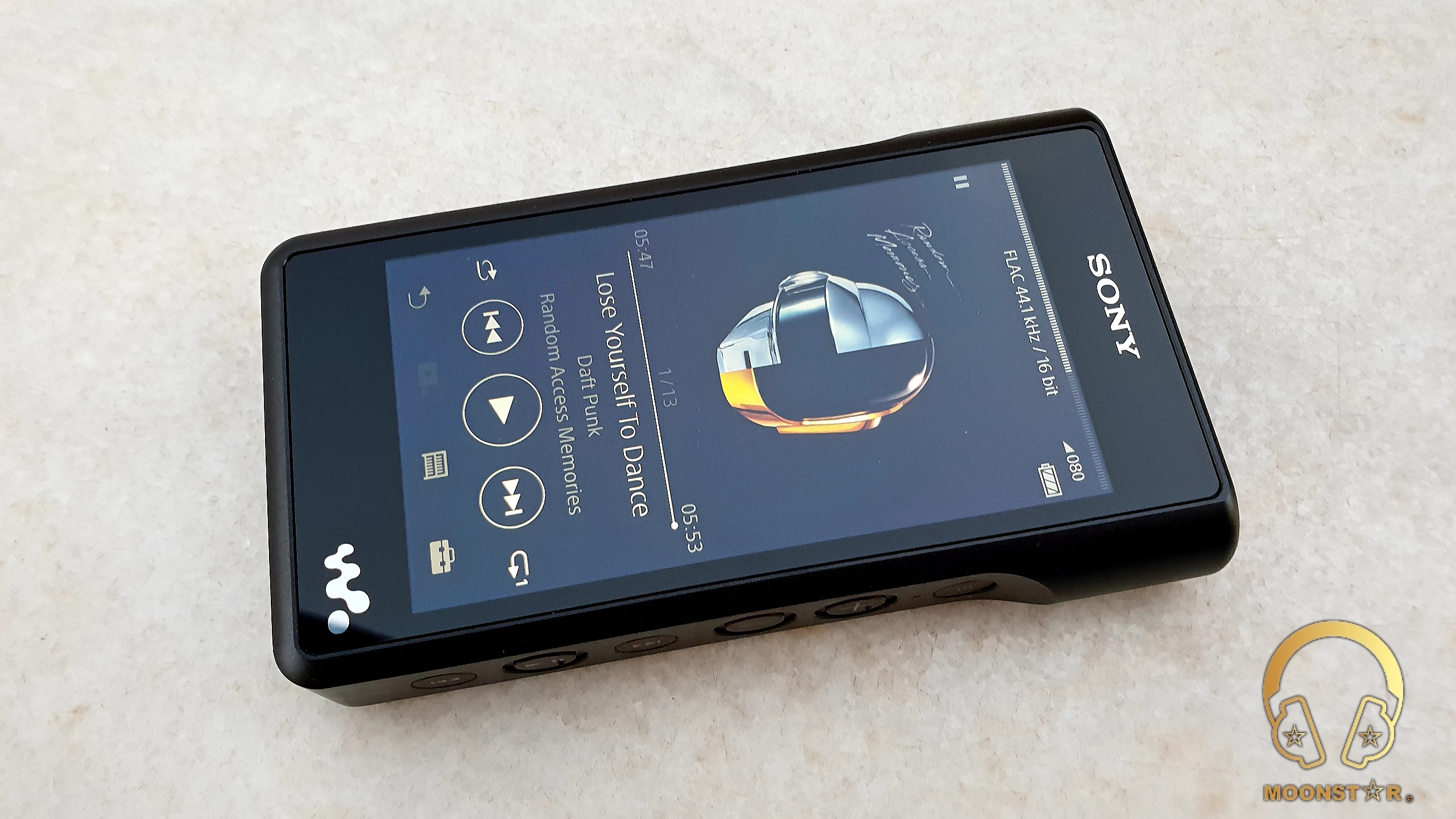
Conclusion:
The M11 Plus is definitely an upgrade over the highly successful M11 Pro that offers many improvements in terms of sound, software and hardware specs. What I really like about the sound of the M11 Plus is its versatile character that shows a decent sense of transparency, resolution and dynamics from the lows to up to the highs. Moreover, it has a very stylish industrial design and high build quality, while it offers tons of impressive features, such like a Dual ES9068AS DAC, a fast Snapdragon 660 Octa-Core SoC, a powerful THX AAA-78 Amp Module, an Intelligent Volume System, a gorgeous looking 5.5” bezel-less touch screen and almost any type of digital and analog in- & outputs, which should be in a modern device at this level.
Thank you for the Read!
Moonstar
@glennkresge Thank you!
Apom
Awesome, thanks. Have they fixed the issue to enable Apple Music to work on this model, unlike the M11 Pro?
rev92
Reviewer at Ear Fidelity
Pros: Value
Great performance
Screen
Form factor
Build Quality
Android 10
Cool design
Fantastic sound quality
Musical soul
Very, very competitive
Great performance
Screen
Form factor
Build Quality
Android 10
Cool design
Fantastic sound quality
Musical soul
Very, very competitive
Cons: A little dark signature for those used to Fiio sound house
Introduction
I’ll tell you a quick story… So one day I thought to myself – I’m just gonna get some TWS to listen to some music. It’s good enough. Well, later that changed – alright, maybe some nice IEMs that I’ll use with my phone. Well, I hear the difference, so a dongle might be a good idea… All that led me to try a DAP.I’m not gonna buy it, I’m just gonna try it. Okay, I just bought a DAP, and here is why it happened: I love music, but I also love comfort. If you are one of those people that actually pay attention to authors, you know I’m pretty fresh on Ear-Fidelity, and in headphone world in general. The whole thing started for me when our beloved, sacred founder Paweł, started slowly showing me that headphones are actually kinda cool. I’ve quickly started catching up and you know, appetite grows on what it feeds on.
Also, some big changes are coming in my life so I had to get rid of my stereo setup. All of that combined I quickly started looking for a really good IEM setup. Especially after I’ve heard Campfire Audio Andromeda 2020 with Lotoo PAW 6000. That showed me what can I get soundwise and of course, I want it now.
Don’t look at me like that, you know how it is. But, there is a small drawback, as Lotoo player doesn’t support streaming services. It’s a deal-breaker for me (but if you want just a file player, it’s a killer DAP, get it). That’s when FiiO dropped the new M11. Previous models have had a great reputation among folks, so you can say that the new model was something that a lot of people waited for. Why a new model? Oh you know, big fire, the factory burned, AKM big sad, whole world needs to change to other chips to survive. Not many people heard about it, you know? A quick look at fiio.com proved to me, that it’s what I need function-wise. I was able to borrow it for a day, and after a listening session with Campfire Andromeda and Mammoth I decided to pull the trigger. Now it’s my EDC and here is what I think about it.
Packaging

This DAP comes in a very nice box. It looks kind of like some premium PC parts packaging. I lowkey expected RGB inside. It’s a black box with a player shape made with iridescent paint. Flashy, but good flashy. Also consistent with recent FiiO packaging of other products. Tickles my fancy.
Inside you will find the DAP itself, surrounded by thick foam. Nothing will happen in the shipping, trust me. One layer below is the land of accessories. We get a quick start guide, microSD card tray opener, USB A-C cable, 3,5mm jack to coax pigtail, and finally a leather case. On the manufacturers website a screen protector is also mentioned. I wasted 30 minutes of my life figuring out where it can be, or if they have forgotten to pack it.
It’s already on. It’s stuck so perfectly that I just didn’t notice. Extra points to FiiO for including basic protection (case and screen glass) in the package already. This way you just open it and go about your day.
Build Quality

TOTL build quality. End of story. The newest M11 feels just like a monolith. Everything is fitted perfectly. No spaces around sockets, nothing.
The front is dominated by 5.5”, bezel-less LCD screen. It has a ratio of 18:9, which is 2:1 don’t know why they say it like that. The resolution is 1440 x 720 and it stands out compared to even mid-tier smarphone. The sides of the device are filled with hexagonal buttons and switches. They all have a nice tactile feeling.
The left side is also home to quite a unique volume control. It’s a carbon fiber panel that can be both used as buttons (top and bottom), or as a slide touch panel. The second option is great when you need to trim the volume when songs on your playlist vary in loudness. There is a hold slider that allows you to block buttons and screen so it doesn’t do anything stupid while being in your pocket. I like that.
The whole backside of this unit is finished with a glass panel with a diamond like structure underneath the surface. That looks amazing and it’s a shame, that it ends up behind the leather case. Speaking of which, that is also top-notch. I’m not sure but it kind of smells and feels like the real deal.

Put together with DAP it looks great and safe. One thing that bothers me is that after some time the lip that closes the case might be kind of loose when leather wears down. The player itself weighs almost 300 grams and has dimensions of 136,6 x 75,7 x 17,6 mm. It’s big but manageable.
Tech

Oh boy, that’s gonna be a long one. Let’s start with the computer part and then we’ll finish with the audio part. The brain here is a Qualcomm Snapdragon 660, the same as in FiiOs top DAP M17. It’s used in the middle of the range smartphones. For DAP it’s a monster. It has 8 cores with 8 threads, each running, and decent 2.2GHz. Even though it’s over 4 years old it basically is overkill anyway. Adreno 512 is a GPU standing behind everything that displays on the LCD.
M11 uses 4GB of RAM to make that dragon snappy. It scores 335 single-core and 1618 multi-core in Geekbench. No, it won’t run Crysis. Doesn’t matter, but I know somebody will ask. Built-in memory is 64GB, around 48GB of it is usable for us. Onboard, you will find a new Bluetooth 5.0 chip, namely QCC5124 with aptX, and LDAC. It can work as both receiver, or transmitter for your convenience.
You also get Wi-Fi with a 2.4GHz band, and 5GHz band. It supports AirPlay and DLNA. For your files, you can use a microSD card with a capacity of up to theoretically 2TB. That’s what they said. Even if you use 1TB it’s probably more than enough for 95% of us.
The first audio part that the signal encounters on its way is DAPS (Digital Audio Purification System). Under that name sits an FPGA centered buffering and reclocking circuit. It’s probably using FIFO buffering as the most appropriate thing to do, with some nice NDK femtosecond (I assume femtosecond jitter) clocks. The point of this stage is to isolate noisy, jittery central processor from DAC, and coaxial output circuit. It’s a nice touch and I really appreciate it. DAPS is also responsible for DSD conversion if you wish to upsample everything. Then the DACs themselves.
Two ES9068 working in monoaural configuration. I want to talk about them for a little bit, as they are very interesting and stand out from what this company usually does. They are a very integrated solution, there is actually even ADC on board. Low noise voltage regulators, MQA decoding up to 8x (can MQA die already? It’s long overdue), everything is inside the chip. But wait dude, that’s awful! We want super audiophile parts! No, you don’t. Why a big part of our community absolutely can’t stand 80% of ESS DAC-based devices? Because their top DACs everybody loves to put in everything are extremely susceptible to layout and external components. JDS Labs mentions that in their blog post about Atom AMP+, but if you dig enough you will find much more on that. I wonder what Jason Stoddard has to say about ESS chips. I have a friend, who is experienced IEE and it took him 2 years to make ES9038PRO sound great. Most companies won’t take that long, especially when they base everything on measurements. A more integrated DAC chip from ESS seems to be much easier to implement, and here it sounds excellent without its usual problems.

The analog stage for DAC uses OPA927 which is an upgrade from previously used in M11 LTD OPA1662. Volume control is done in the DAC chip instead of a dedicated chip (NJW1195 in the last model). The headphone output is based on THX’s new technology AAA-78. This particular solution is on top of the audiophile mobile line in their portfolio. What makes it special is the error correction circuit that is a proprietary solution of THX. It works by isolating the errors on the output and feeding them in reversed-phase into the amplifier. Positive error summed up with negative error equals in no error at all. That’s how the whole series of amps gets such low distortion. I know it’s a vague explanation, but that’s what I have for you right now.
Obviously, we have balanced outputs and single-ended ones. 4.4mm and 2.5mm will give you up to 660mW@32Ohms and up to 300mW@16Ohms, both below 1% THD. That’s not too shabby, to be honest. Both can be used as line outputs, neat! Inside the M11 PLUS II has circuits sectioned out and protected by metal shields. I expect it’s as good inside as is the outside appearance of the DAP. All of those goodies are powered by a big 6000mAh battery supporting a quick charge of up to 27W. Most optimistic playback time is mentioned up to 14h, so expect around 10h depending on your use case. Practically it was something around that for me.
User Interface

It’s an Android, thank you for attending my TED Talk. Alright, alright, don’t get too excited. It’s Android 10, which means it should be quite future-proof. System supports dark mode, gestures, and third-party apps. Obviously, it gives you lots of ways to customize your DAP. You can even change the keyboard to something more convenient than the original one. The first stand-out feature of M11 is 5 modes the player can work in.
Android Mode – self-explanatory. It’s like a smartphone without calls, but with good sound. You can use any music player or streaming service that is available on this system.
Pure Music Mode – turns off everything besides FiiO Music that plays from files on inserted SD card. It’s the most audiophile mode and probably the most energy-efficient. Two birds, one stone.
USB DAC Mode – obviously it can be used as a standalone DAC. Paired with line outputs it can absolutely work as not only a portable player but also a stationary one. No docking station for it, but I think that we all grew out of that phase.
Bluetooth Receiving Mode – receives Bluetooth.
AirPlay – receives music stream over Wi-Fi from Apple devices.
Well, you can clearly see that the new M11 is very flexible. Nothing missing comes to my mind. For external control, there is an Android app called FiiO Link working over Wi-Fi and BT, and simpler control over BT from iOS devices. The bad news is that I just can’t make FiiO Control on my Xiaomi Mi 10T Lite. It just won’t connect to the DAP. Pairing stops. Keep that in mind if that’s something you want.
The basic music player is FiiO Music app preinstalled, the one that is found in Pure Music Mode. The #1 question is: does it make a difference to choose Pure Music Mode? Yes, yes it does. Is it a huge one? No, not really. If you listen to your files, just choose it. If you don’t feel it, at least your battery should last longer. The sonic difference is slightly cleaner and more dynamic sound. Oh, it also supports DLNA, a standard loved by so many and absolutely despised by me. I can never get it to work, I’m not even trying now. This one is on me. Can we just all go for Roons RAAT? It works, it’s easy. Come on… One unusual thing I’ve noticed was that some descriptions in this app were in Chinese. It got patched pretty quickly. Also in another part of the player, there was a French description, when I have English selected. Those are minor things and I can see they are getting steadily patched, so no sweat. There is a universal button on the left side of the DAP that you can program to access a mode or a function easily.
The last section will be about third-party apps. You can use them as long as they are compatible with Android 10. My first choice is Apple Music, sadly it’s struggling a bit with short stops in playback when streaming. Just like its buffering for a bit. I’ve messed around in the settings but can’t get it to stop. I’ve issued a ticket in FiiO support, I think it will get resolved quickly, just like other bugs. Tidal on the other hand works flawlessly.
Sound

Well, it’s a great sounding DAP, if you are looking for one. Its price to performance ratio is excellent. Overall the sound is on a darker side with my favorite ink-black background. A great indicator of very good noise performance. If you, as I was, are afraid of ESS DAC-based sources don’t be. There is none of that infamous harshness. What we do get is the good ESS sound. Nuclear dynamics, insane detail, everything just pops freely all around. It still isn’t supernatural style of AKMs but it has its niche without its most annoying drawbacks. We will be back to AKM soon and boy it’s gonna be nuts.
Looking at output power it’s obvious that M11 should be used with IEMs and that’s what I’m focusing on. My lineup consists of CA Andromeda (both), Mammoth, UM MEST, FiiO FH9, Shuoer S12 and more. The absolutely most important thing is that this DAP is capable of switching me into an emotional state of listening to music. It creates an illusion of sound that is so good that it allows me to just totally chill and open up for music. That’s what separates good and awesome audio gear apart. Me, being used to big audio, wasn’t expecting it for such a low price of $750. It’s not TOTL sound, but it gives you music, not only sound. As I’m writing the below paragraphs it occurred to me that mixed with various IEMs this revision of M11 can be the answer for lots of folks needs.
The bass is obviously a strong point, as it’s one of ESS DACs best features. If you are a bass-head get yourself CA Mammoths with a silver cable and you’re done. That’s it. Okay, UM MEXT is probably gonna be a TOTL for bass, but for around the price of them, you get this whole combo. Back to the DAP at hand (it’s hand-held, get it?). I really can’t imagine better bass at this price. It has everything: perfectly controlled, goes to the depths of hell, is amazing at showing textures, and is completely unchained. Wanna push it to the limit? Drop Blastoyz – Mandala it’s gonna blow your mind, what not that expensive DAP can do. Acoustic pressure is gonna blow your eyes out of their socket. THX has done an excellent job on their amp, especially that Mammoths at 8Ohm are greater load than recommended 16Ohms and up. Looking for something more sophisticated? One of the greatest bass lines for me is played by Justin Chancellor in Schism by Tool. Drums and bass are executed perfectly and M11 shows you that in full glory. You can even pick up how the fundamental resonance of a string changes while it’s moving after being struck by a musician. Yes, it’s that good, and it doesn’t feel one bit technical. Reference bass, period.

Mids are actually great too. They share the same qualities as bass: they are detailed, have a great dynamic range, and are very rich with textures. Their tonality is neutral, but never thin, or lifeless thanks to players’ darker sound signature. Overall it’s a very mature sound, it’s not trying to win you with cheap tricks. I’ve always felt that Comfortably numb from my favorite Pink Floyds album has that holy sound to it. It’s a combination of a wide soundstage, weeping guitars, and delicate cymbals. In all of that flow David Gilmour and Roger Waters voices. It all feels relaxed and comforting. This DAP easily recreates that feeling with its clean and open mids. Another thing that sounds excellent with this device is the piano. Its great dynamic range and richness are not limited in the smallest bit. Listen to basically anything from Tsuyoshi Yamamoto Trio and see why I like them so much. They have the perfect mix of emotion and chill at the same time. Midnight sugar, the whole album, can be a prime example of that.
Highs are on the backburner a bit. Darker tonality means they aren’t as present and fulfill more of a support role. What is significant for this range, they deliver very nice detail and resolution. It’s Sabre, and Sabre is a king of detail after all. Listening to The Division Bell by some unknown rock band is a pure pleasure. The sound is open and clean on the top end. It really creates that feeling of space all around you. Coming back again to Tsuyoshi Yamamoto Trio I can definitely tell that this model’s highs are a little hard. Don’t think of it as harsh though. It’s more a thing about not being as rich, and shiny as Cayin N3PRO offers. That probably goes about other non-Sabre DAC players. I feel like this range is the most difficult for ESS DACs overall. That’s AKM territory, no questions asked.
Comparisons
Fiio M11 Plus LTD
I’m gonna get a lot of flak for that. M11 PLUS II is a better player than M11 PLUS LTD. I know, some of you fan bois want to burn me at a stake now. But it is what it is. Even though I was actually expecting the opposite. Old M11 has less controlled sound. Bass doesn’t get as low and isn’t as controlled as it is in the new M11. It’s boomier while not having that amount of information. That is quite obvious. The big shocker is that the new player also has better midrange, and not by a small margin. It’s deeper, more involving, warmer, and has better dynamics. The older one sounds a bit flat in comparison and sometimes dryer. It’s the highs that are in favor of the older brother. They are more pronounced, more natural, intense, yet not tiring. The soundstage of the old DAP is wider, but not as precise. It also loses some points here for a less clean background. What might actually save M11 LTD in some cases is that’s a very smooth, and more forgiving source.
In terms of interface, and the rest of the features they work basically the same.
Shanling M6 PRO (21)
Here is a direct competitor. Shanling is based on older Android 7, and you can feel that in the user interface. It still works nicely, but not as nice as FiiO. Hardware-wise it’ ‘s basically the same. The weaker CPU Snapdragon 430 uses 4GBs of RAM as well. Two DACs are ES9068 and I think that Shanling was the first DAP to use it. It uses top-of-the-line analog amplifiers inside. Output power on balanced out is bigger at a whooping 760mW@32Ohms. Damn. M6 PRO is doing the same stuff, but differently. Shanling sounds darker, has thicker bass and fewer highs than FiiO. With my Mammoths, it is just way too dark. It would go along nicely with MEST though. New M11 delivers a more exciting, lively, detailed, more open sound. It is overall a better player with much more longevity (Android 10 and better hardware). Shanling would be a good rival for older M11s as it is their quality level soundwise. The new release from FiiO leaves it behind at a slightly lower price.
The comparison was made using hi-res files with both working in audio exclusive mode.
Pairing
Campfire ANDROMEDA (new)Campfire Andromeda 2020 is a perfect match for this player. I dream about this mix and then my hands are under the sheets. Just play your favorite music and get instantly taken to your special place. Everything is just right in this combo, it’s one of the best combos that you can spend your hard-earned cash. The bang for buck ratio for this one is matched only by the synergy of this combo. Andromeda still is an IEM to beat at this price.
Unique Melody MEST
This one is extremely interesting. While Andromeda is a crowd pleaser and will sound awesome in every sane person’s mind, this hits different. Of course, MEST is a more expensive headphone. True. It also has more potential. Compared to a set with Andromeda, here we get much more open and interesting highs and enhanced bass thanks to bone conduction. Soundstage is bigger than with Campfires, and the sound itself is… Well, it’s wilder. It’s like a very big engine in a very small car.
CA MAMMOTH
Bass-heads unite. This is the ultimate setup for you, with a price tag that doesn’t require you to sell your organs. Thanks to its power and low output impedance (thanks THX), the new M11 perfectly handles those IEMs. That isn’t easy, as their impedance is just 8Ohms. A balanced connection is a must here, don’t even argue. What you get is an insane amount of thick, powerful bass that will rock your world. Dynamic driver at its best, really. While its dominance is unquestionable, mids and highs are still solid. Two BAs work really hard and provide you with a good amount of warm sound. Warm sound from BA? Is he out of his mind? Well, with that amount of fur on this Mammoth everything gonna be warm, isn’t it?
FiiO FH9
FH series from FiiO is my favorite. Those hybrids are always on point in their tonality. A true everyday driver with a good set of features and a balanced sound signature. FH9 is everything this line represents. At its current price it’s one of the nicest IEMs to get. Especially for a beginners. It also gets along with the new M11 quite well. Its sound is the most reserved from this lineup. The dynamic driver allows it to go deeper than Andromedas, and its BAs are easily outperforming the ones in Mammoth. It’s smack in the middle, and I wouldn’t be surprised to see it take place of a go-to headphone at its price.
Summary

With some amazing IEMs, it brought me to nirvana, or as close as you can get to it. Like, what else do you want to hear? I took my own money, from my strippers reserve, and spent it on some metal, instead of some skin. If you are looking for an excellent DAP to build your IEM system on, here it is. Android-based, solid hardware, great looks, even better sound. The new M11 PLUS II has it all. It’s a new release so it has some bugs, but they are fixed rather quickly, as seen with Chinese descriptions. It’s very flexible and can be used as both portable, and stationary music sources. Sounds and works better than the competition, or its older brother. JUST GET IT.
Highly Recommended.
Gear used during this review for the sake of comparison and as an accompanying equipment:
- Headphones – Campfire Andromeda 2020, Fiio FH9, Shuoer S12, Unique Melody MEST, Unique Melody MEXT, Campfire Audio Mammoth
- Sources– Fiio M11 Plus LTD, Shanling M6 Pro, Cayin N8ii, Fiio M17
whitedragem
Parsons: I Robot, ‘nuff said…
(some great soundstage tracks and dynamism to be found here-in; killer album, and a natural extension to many a musicophiles “floyd” catalogue)
love seeing photos of parsons’ on music players- certainly beyond the dreams of audio kit in the seventies.
using an m11+ (family) unit right now to take in some live supertramp recordings..
FiiO really are giving equal(/better) to “good two channel“ ‘home kit’ in these personal audio players.
I am content leaving external DACs out of the dedicated rig, and simply ‘surviving’ on ‘line out’ direct from the M11+
vs an older FiiO X5(III), that was truly bolstered by the original K5 dock when feeding line level into the home rig(wider soundstage/more ‘nuanced delivery’), the M11+ line of digital audio players output a quality vastly better than this pricepoint typically used to give.
Given the MacGuyver nature of these products, these are definite keepers.
(some great soundstage tracks and dynamism to be found here-in; killer album, and a natural extension to many a musicophiles “floyd” catalogue)
love seeing photos of parsons’ on music players- certainly beyond the dreams of audio kit in the seventies.
using an m11+ (family) unit right now to take in some live supertramp recordings..
FiiO really are giving equal(/better) to “good two channel“ ‘home kit’ in these personal audio players.
I am content leaving external DACs out of the dedicated rig, and simply ‘surviving’ on ‘line out’ direct from the M11+
vs an older FiiO X5(III), that was truly bolstered by the original K5 dock when feeding line level into the home rig(wider soundstage/more ‘nuanced delivery’), the M11+ line of digital audio players output a quality vastly better than this pricepoint typically used to give.
Given the MacGuyver nature of these products, these are definite keepers.
sg2k
Did you test the Andromeda's on 3,5mm Output in your Test?
sg2k
I had the Opportunity to test the M11 Plus myself. I have to disagree, the CA 2020 is not the best pairing for the M11 Plus. The Andros 2020 have a emphasis on the upper mids/lower Treble and the M11 Plus is also elevated there. For me it's too energetic or sometimes harsh with some Intruments or Voices in this Frequency Area so it's fatiguing for my ears. I must also say I'm Treble Sensitive. All in all it's not a bad Pairing per se there are also some Highlights, but it's far away from beeing ideal in my Opinion.


So on paper it is just slightly better for 300Ω load but not sure if it is worth the extra $400.